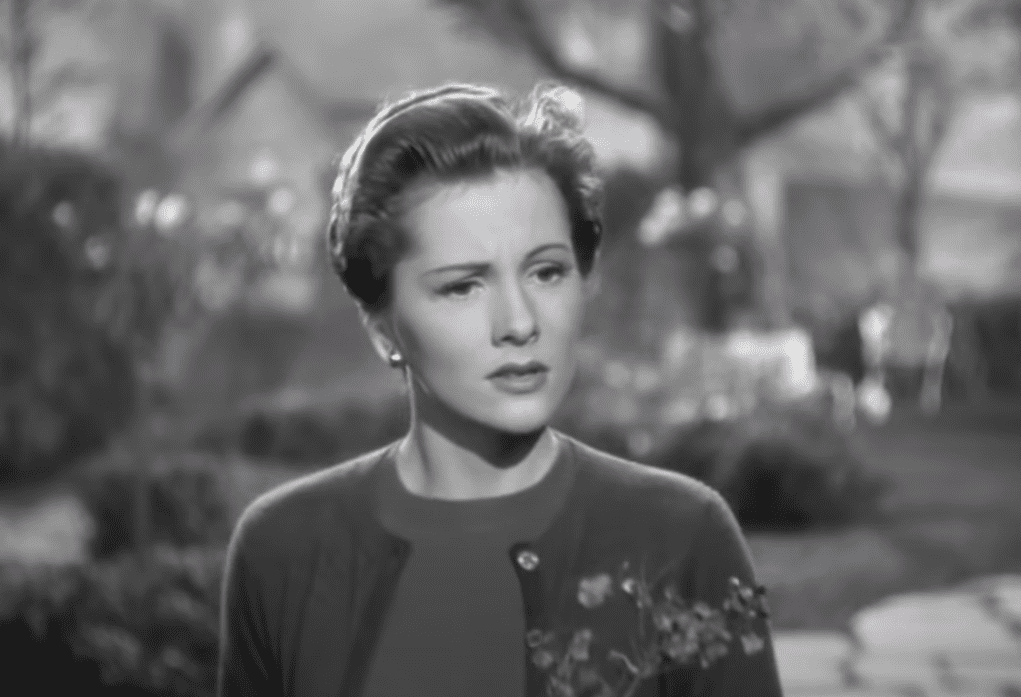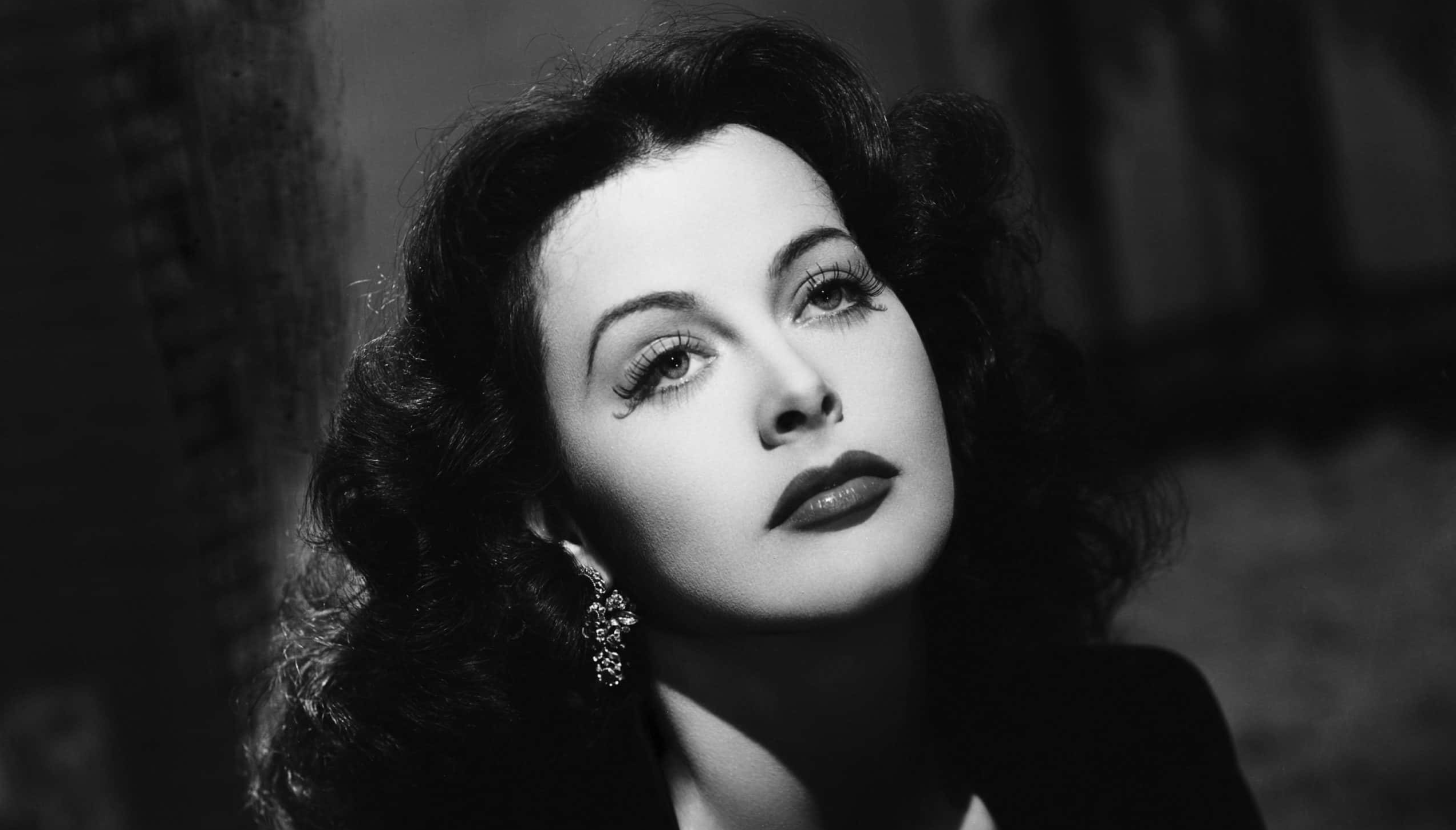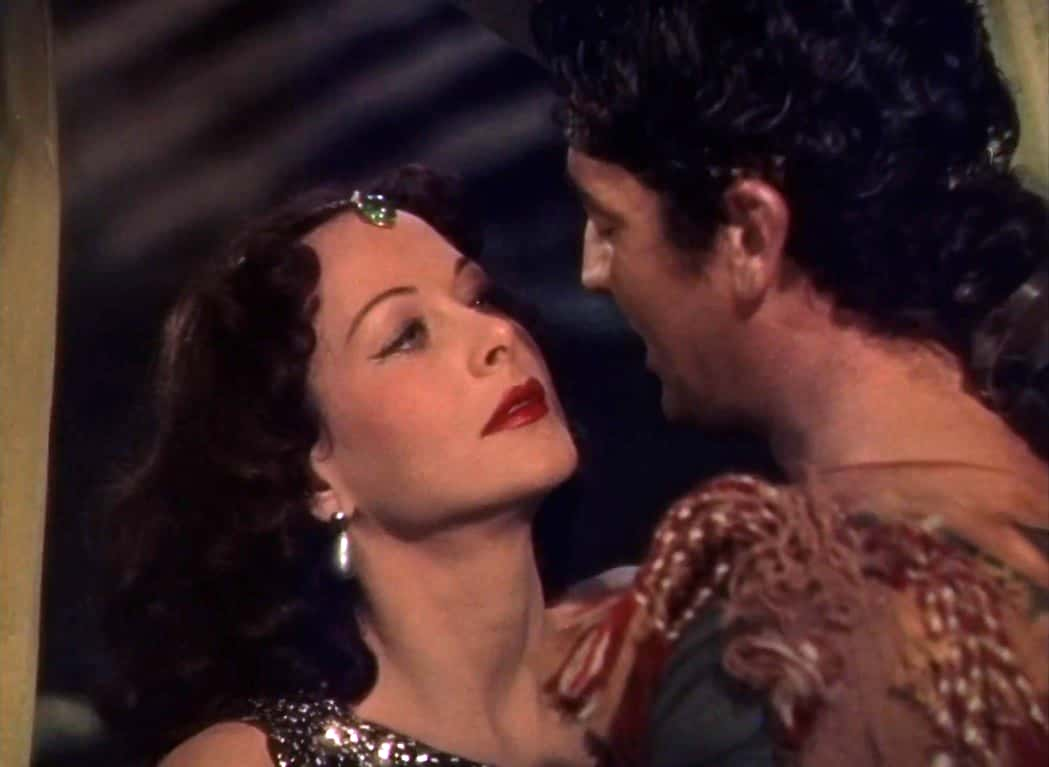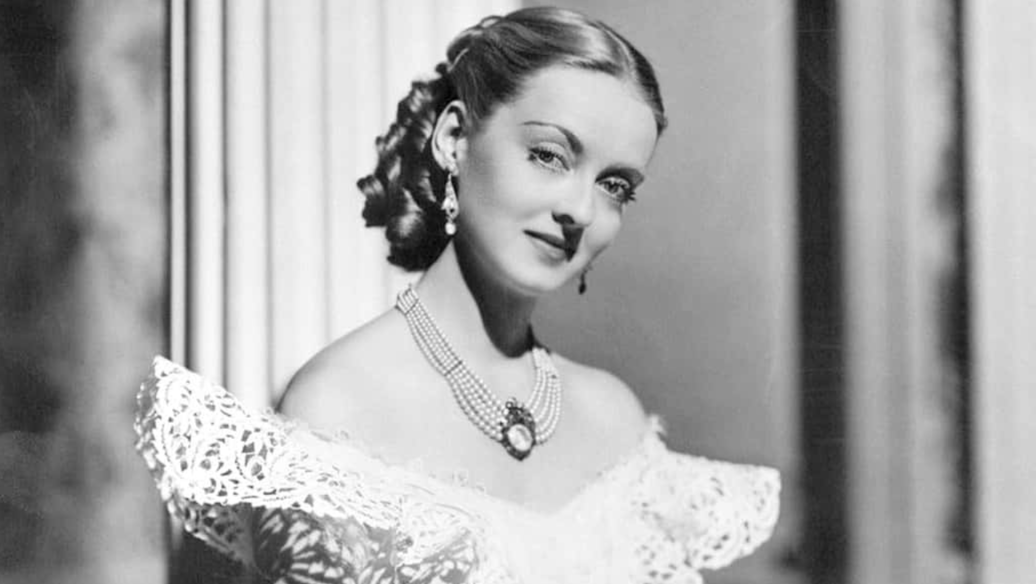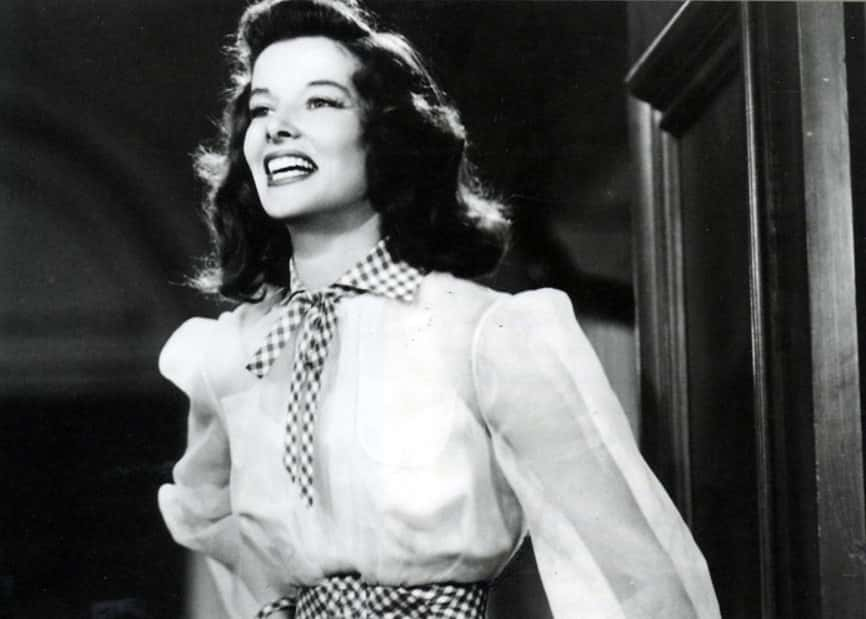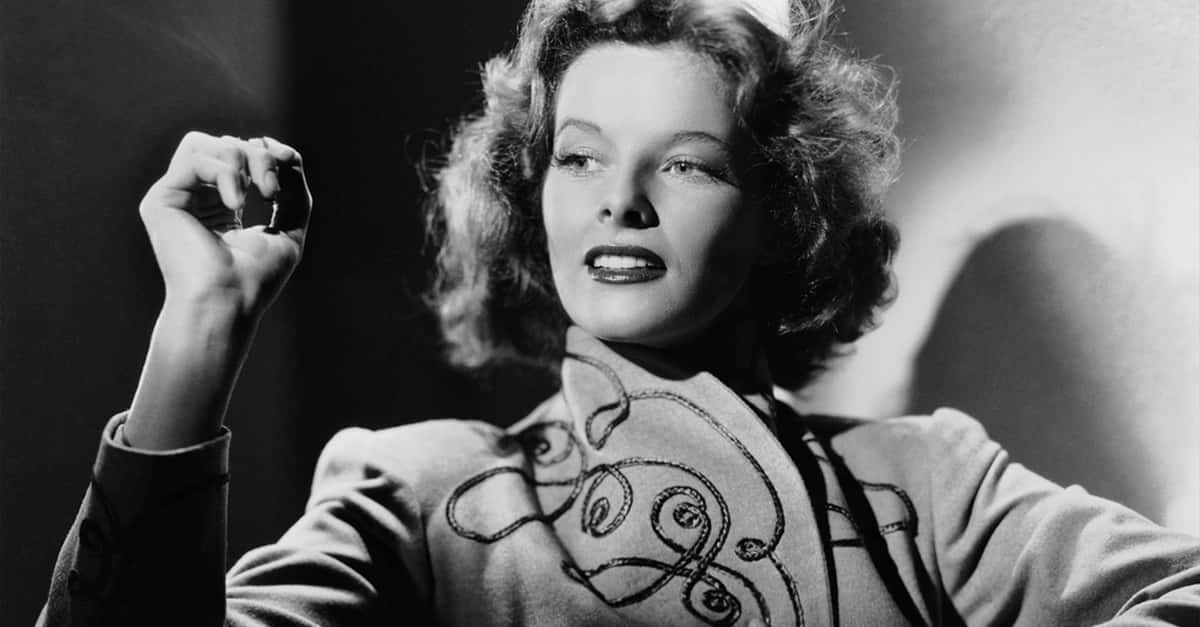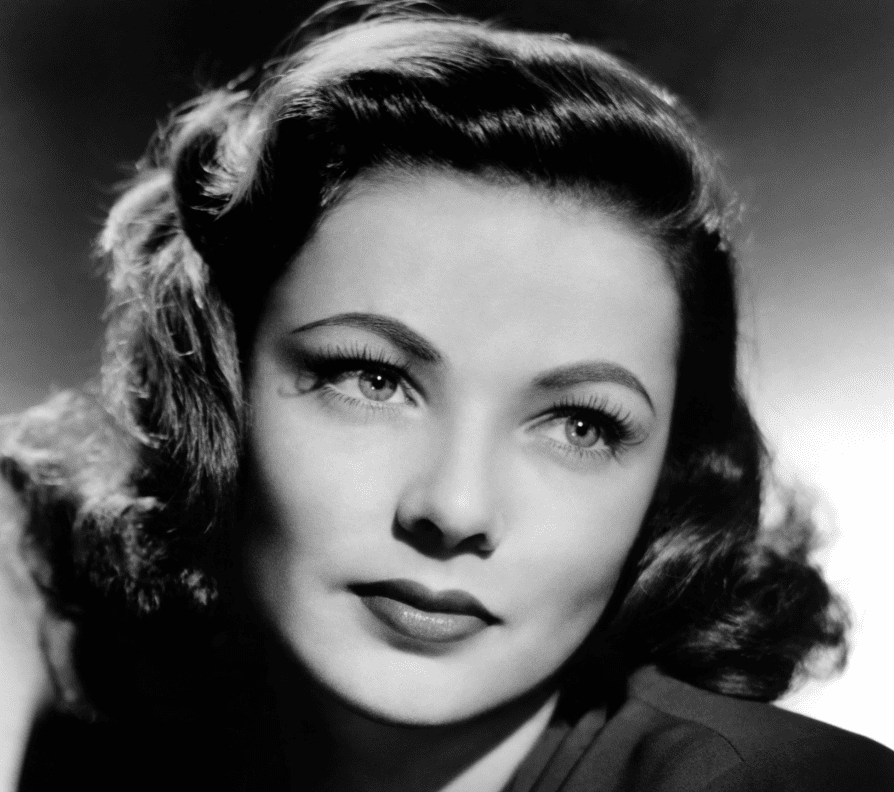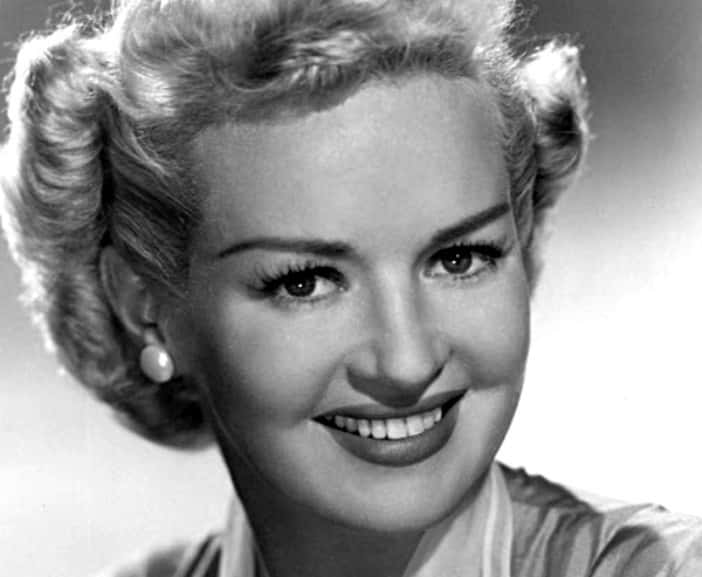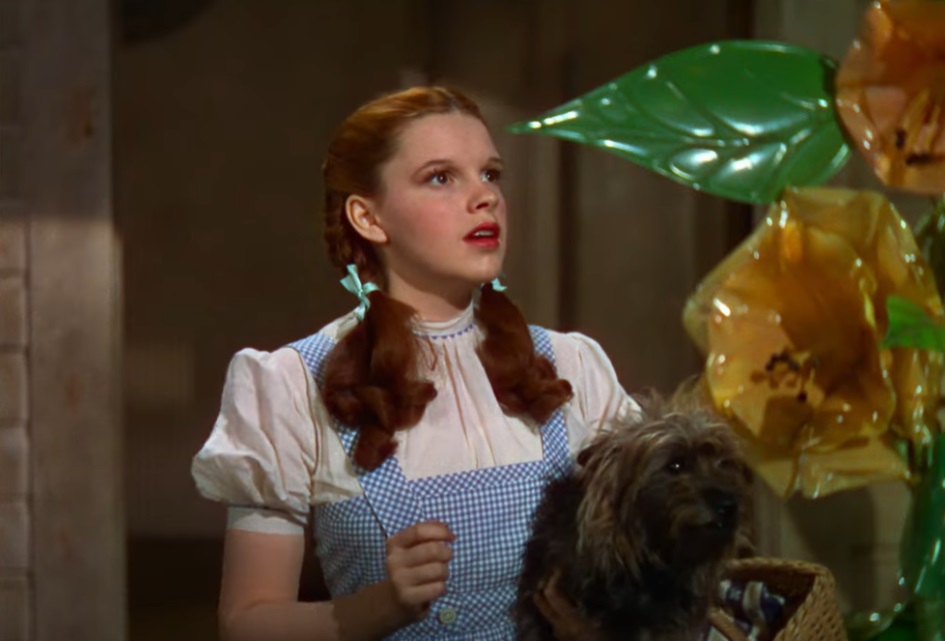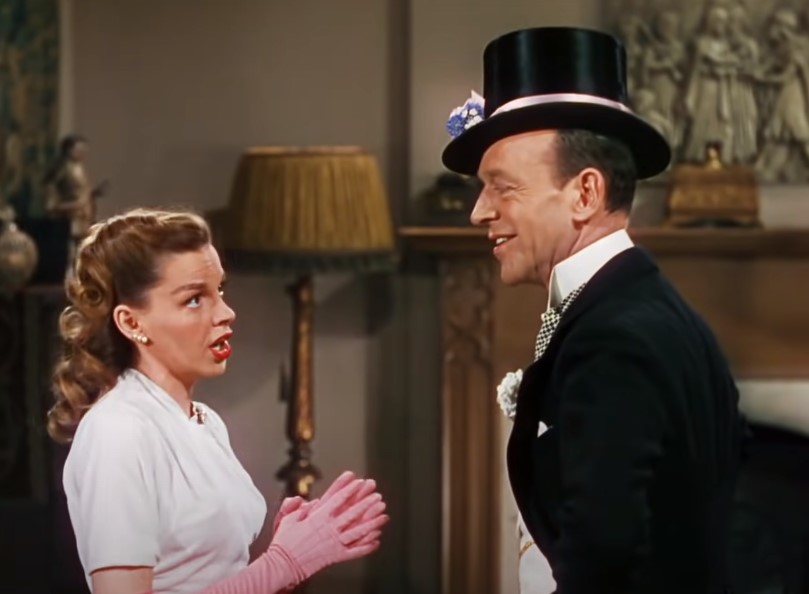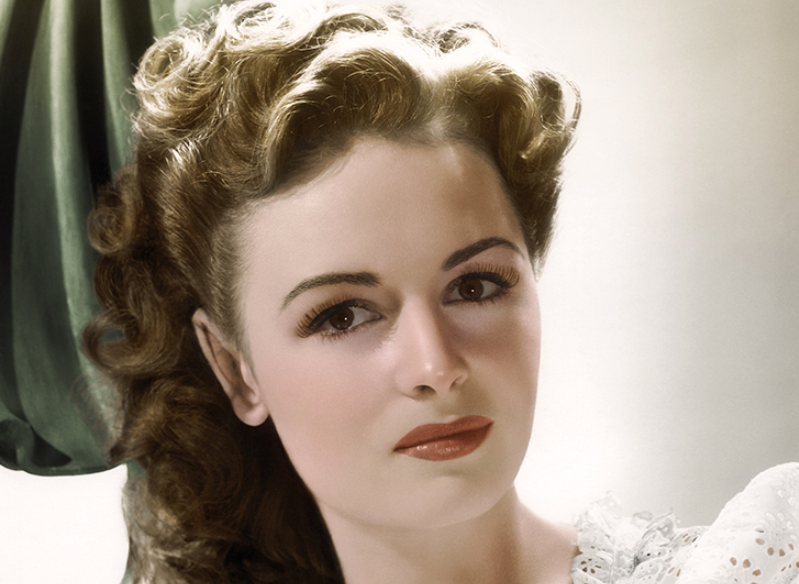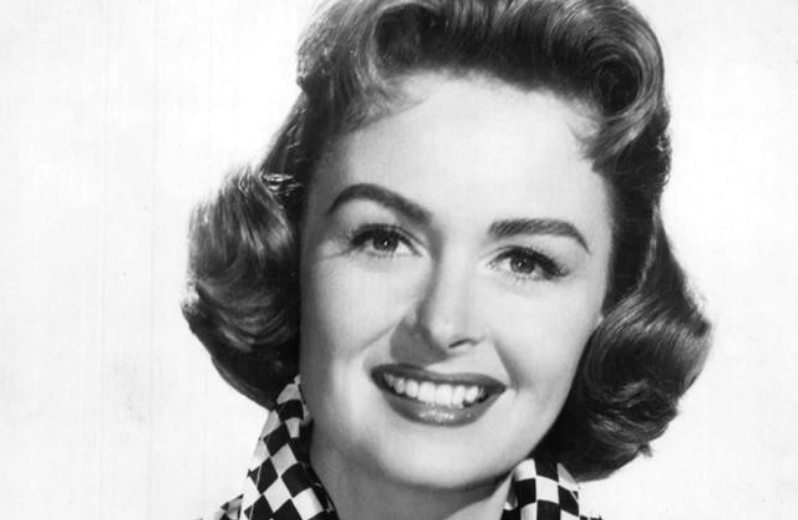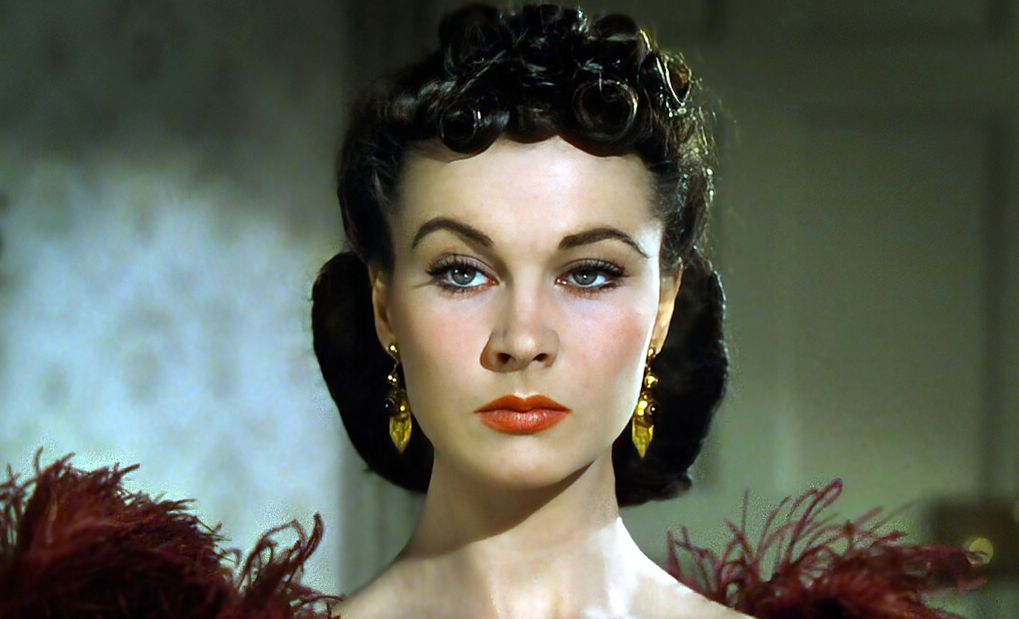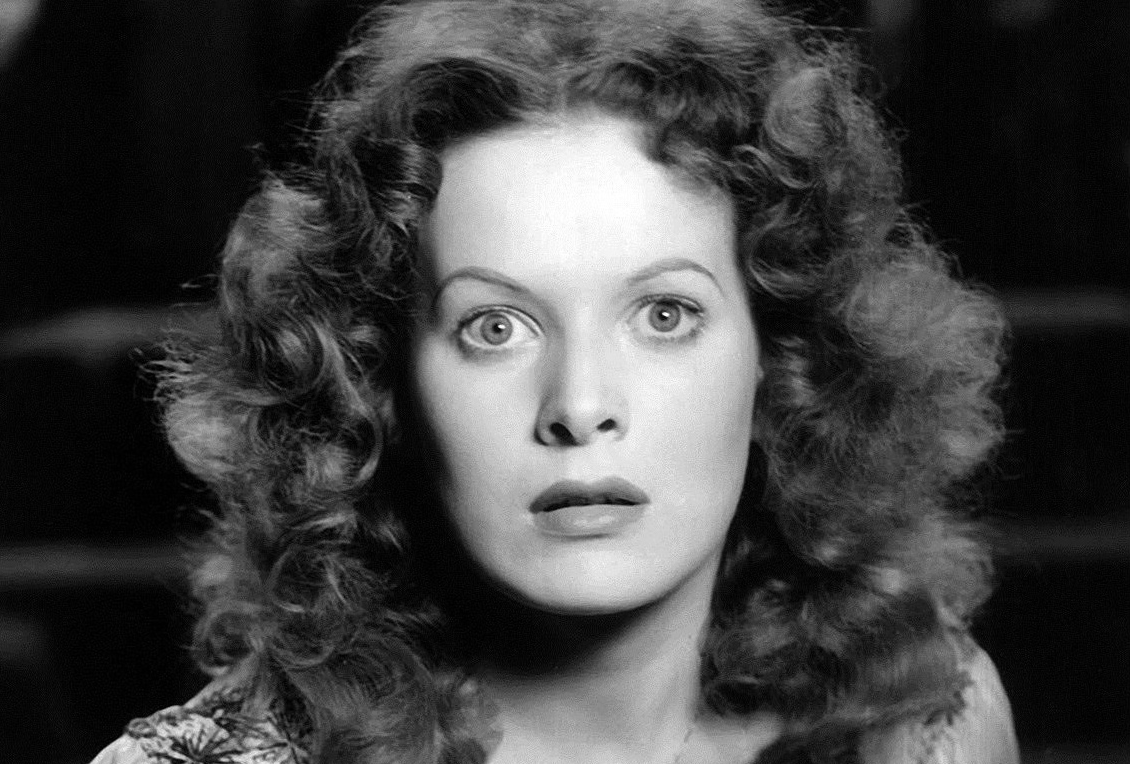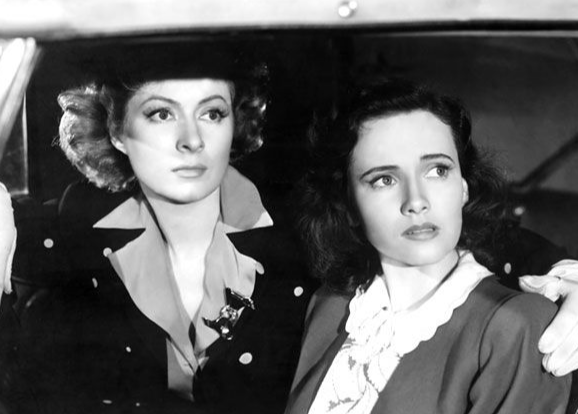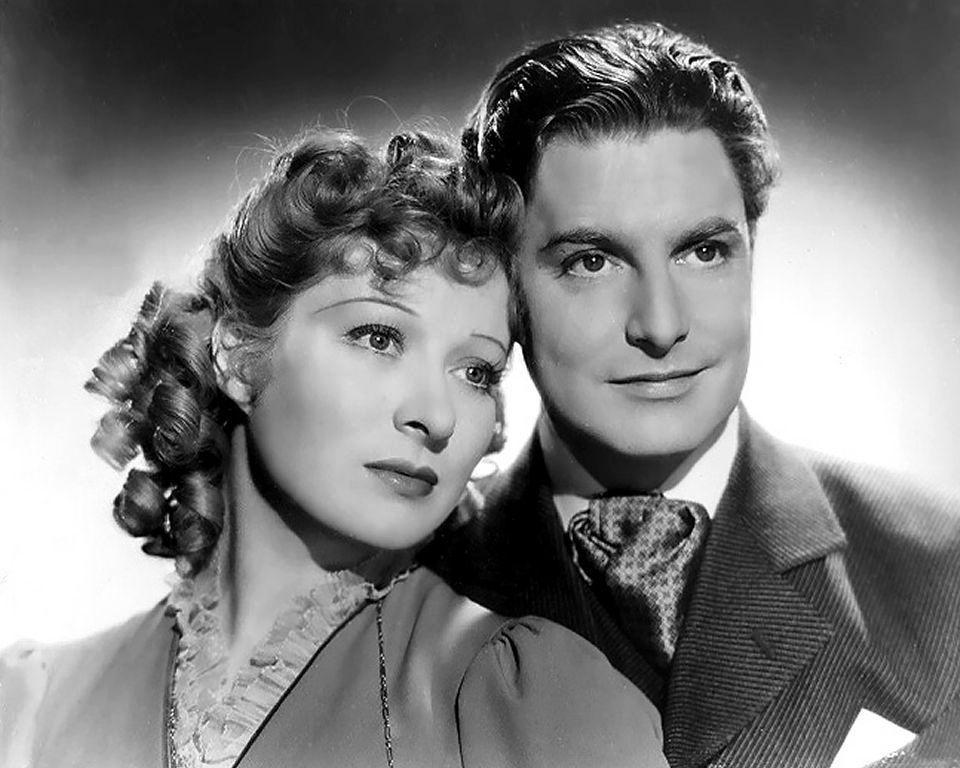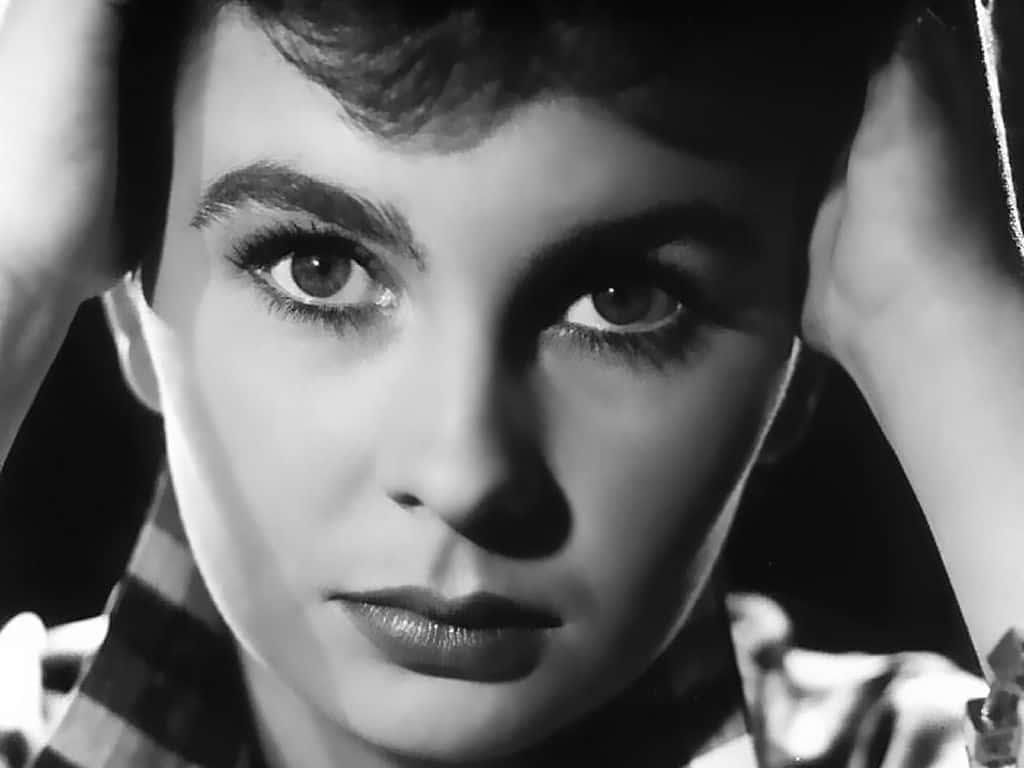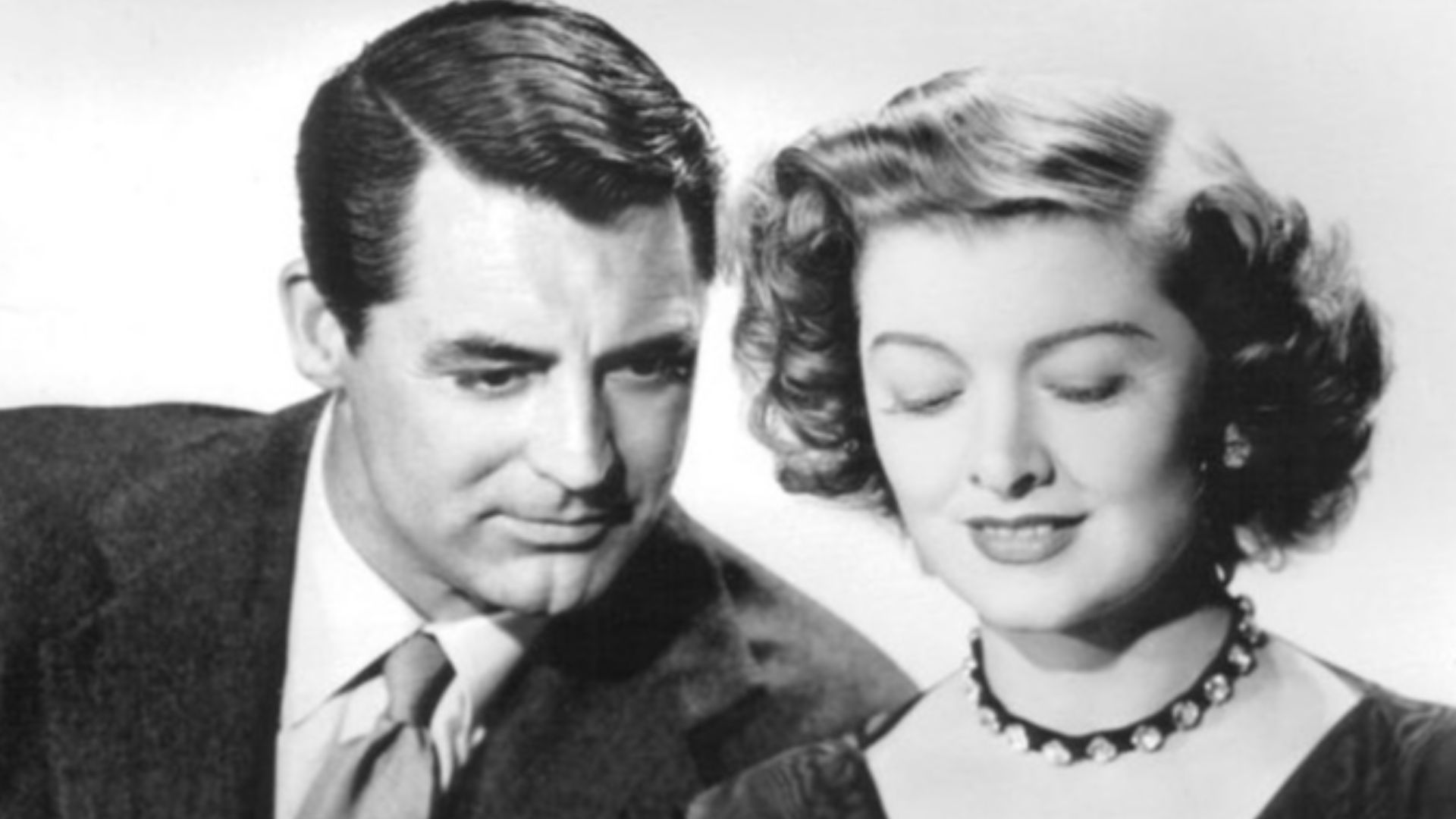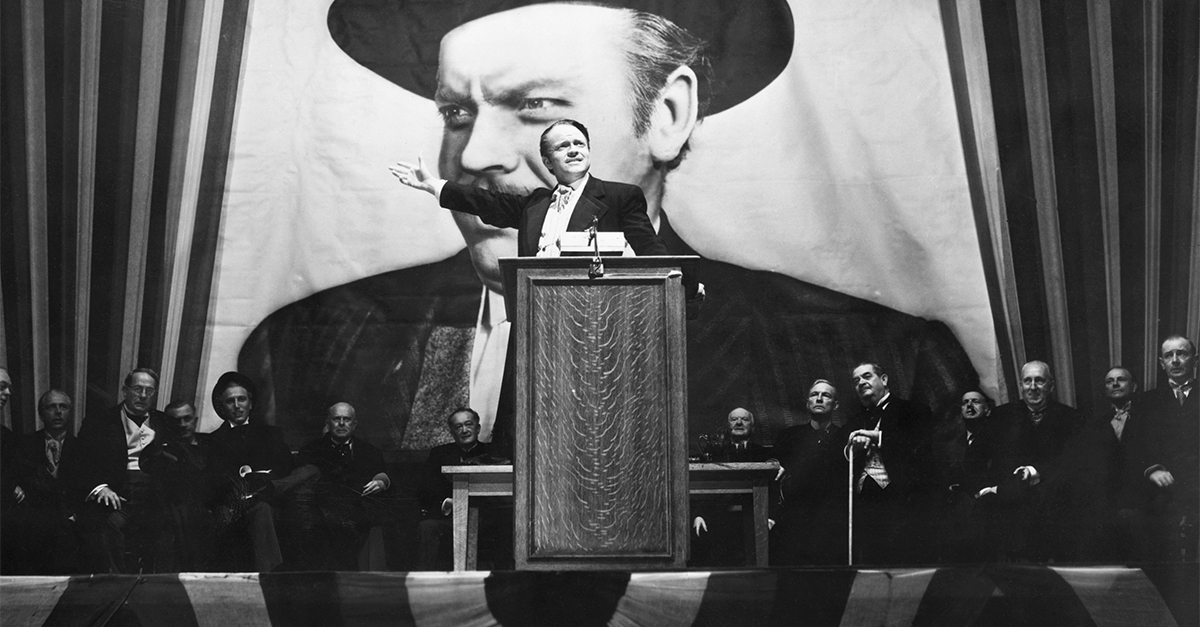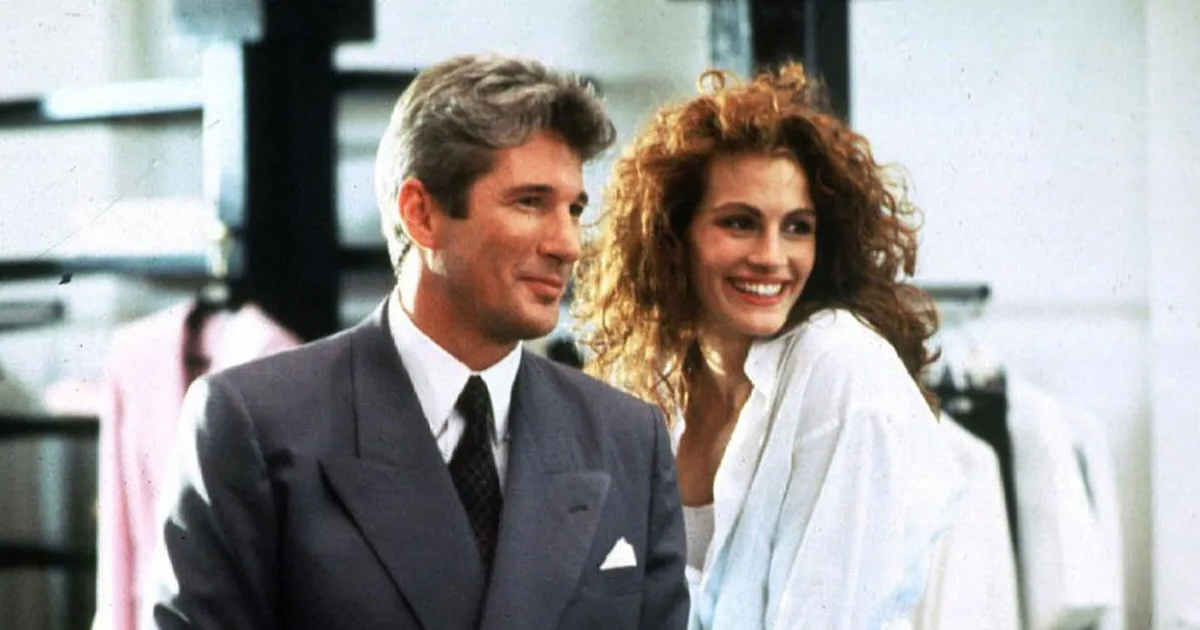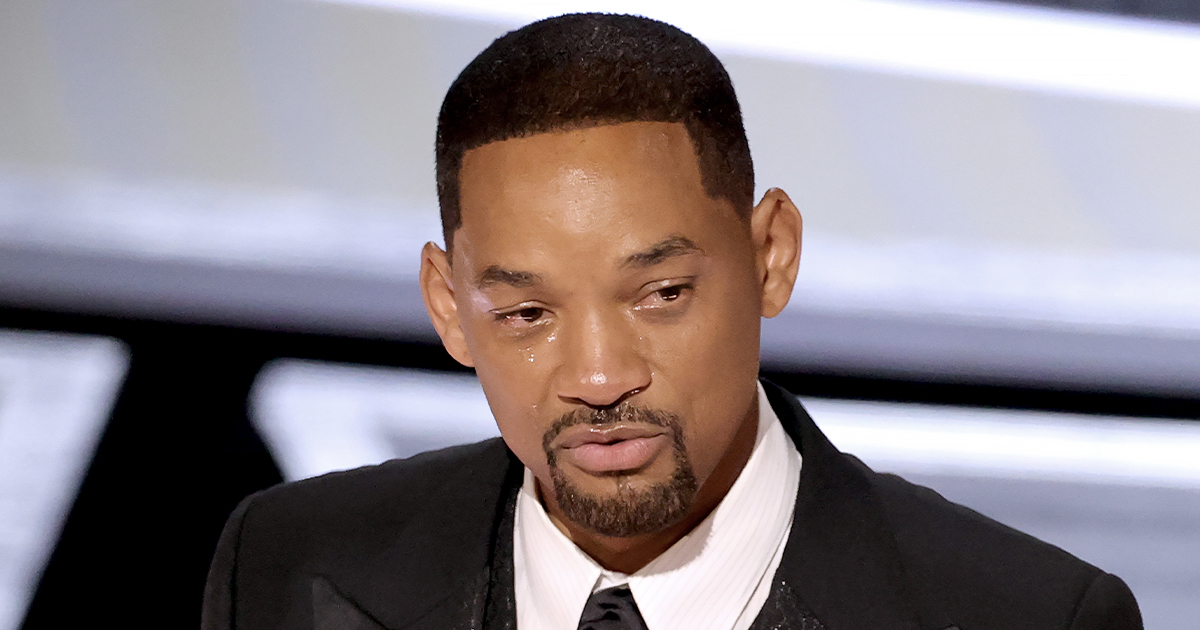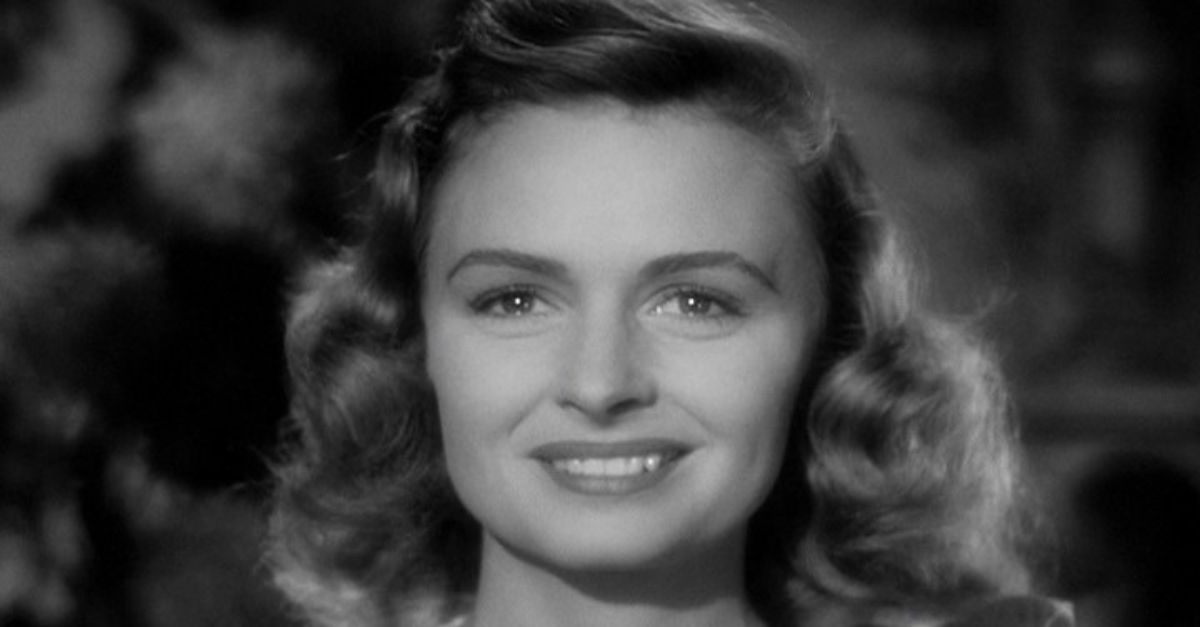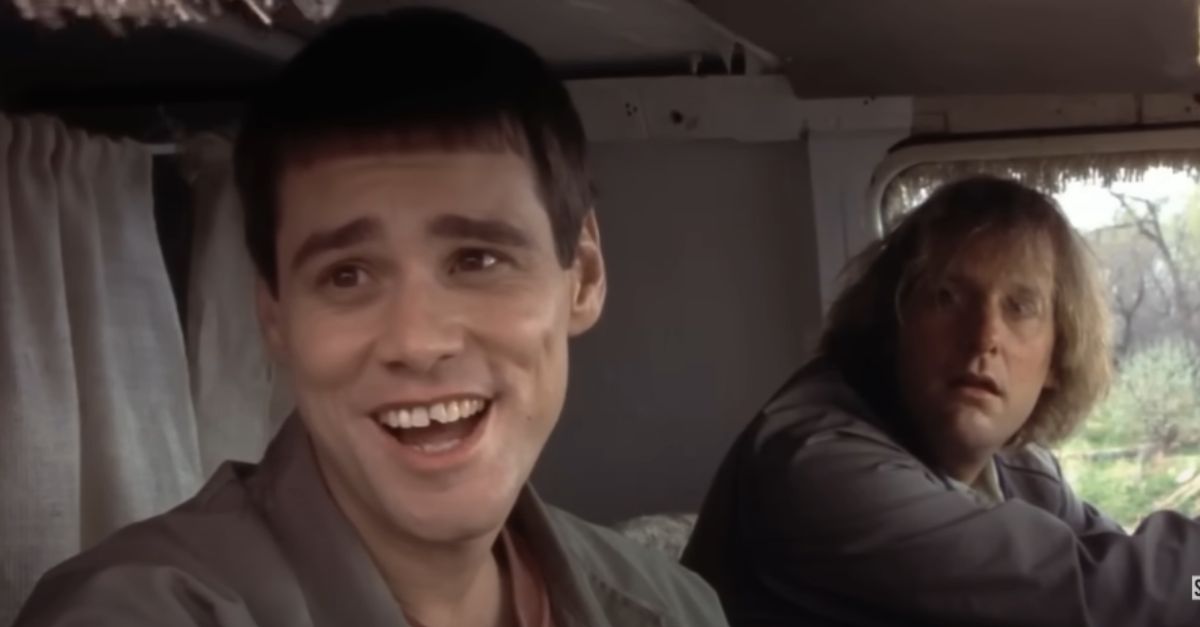Lights, Camera, Legacy
Glamour meets grit behind these iconic silver screen smiles. The 1940s turned Hollywood's brightest stars into way more than just good looks. Their stories bring to light brilliant minds and fierce determination.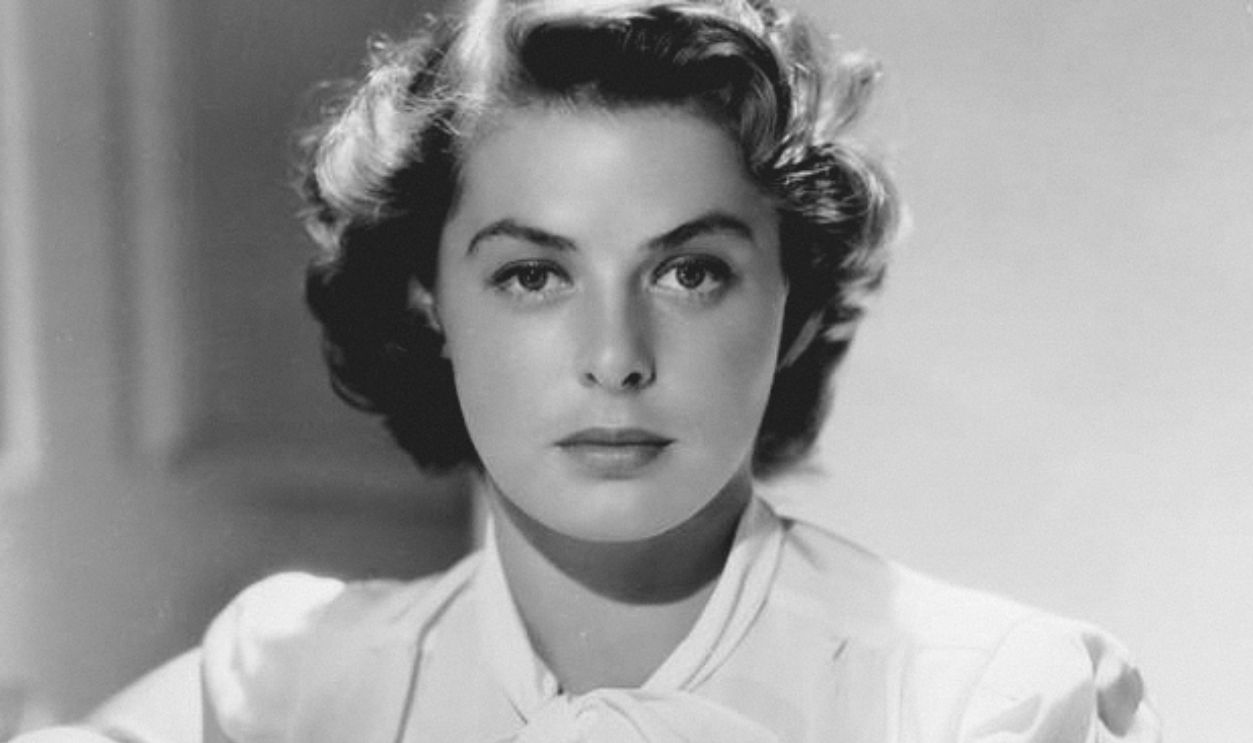
Joan Fontaine
The only actor to bag an Academy Award for a Hitchcock film, Joan Fontaine's victory for Suspicion (1941) cemented her place in Hollywood history. Her rivalry with her sister, Olivia de Havilland, created one of Tinseltown's most famous family feuds, with both siblings competing for roles and awards.
Joan Fontaine (Cont.)
As a licensed pilot, Cordon Bleu-level chef, and an accomplished interior decorator, Fontaine brought the same perfection to her craft as she did to her hobbies. Her refined performances in Rebecca and Jane Eyre displayed her ability to portray vulnerable yet resilient women with fantastic depth.
Hedy Lamarr
Beyond her mesmerizing beauty that thrilled audiences, Hedy Lamarr harbored an incredible scientific mind. The Austrian-American actress co-invented frequency-hopping spread spectrum technology during WWII, which later became fundamental to WiFi, Bluetooth, and GPS systems we use today.
Hedy Lamarr (Cont.)
Her controversial performance in Ecstasy made her notorious before she officially arrived in Hollywood. Despite her technological contributions, Lamarr was primarily celebrated for her exotic looks, which inspired the character of Catwoman. This led to her appearances in Samson and Delilah during her prolific 1940s career.
Bette Davis
"Fasten your seatbelts, it's going to be a bumpy night!" With this famous line from All About Eve, Bette Davis solidified her status. Two-time Academy Award winner Davis was known for her distinctive eyes and willingness to play deeply flawed, sometimes even villainous characters.
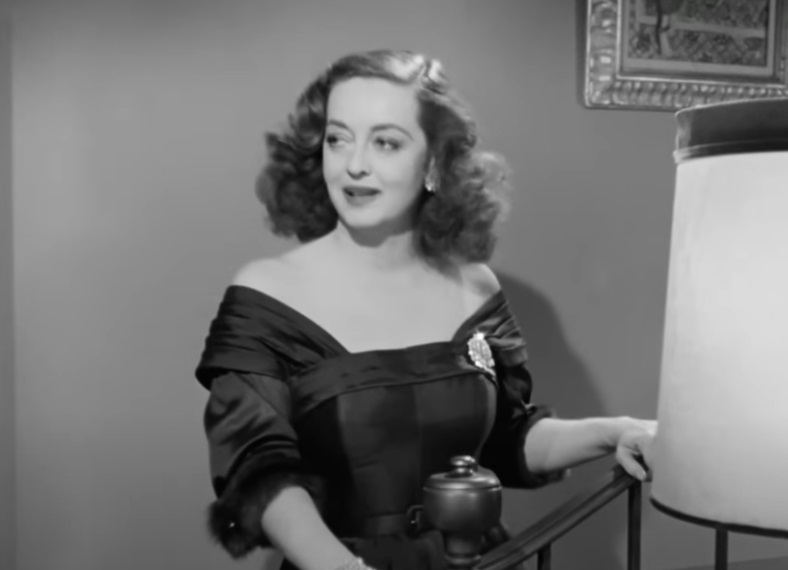 Twentieth Century, All About Eve (1950)
Twentieth Century, All About Eve (1950)
Bette Davis (Cont.)
Davis fought against the studio system that sought to control her career, even suing Warner Bros. in a legal case that changed the way studios treated performers. In 1977, this woman made history as the first woman recipient of the American Film Institute's Lifetime Achievement Award.
Ruth Roman
When the film noir movement was at its peak, Roman's smoky voice and sultry presence made her an excellent fit for the genre's shadowy world. Warner Bros recognized her potential after her breakthrough performances in The Window and Champion (1949) and quickly signed her to a contract.
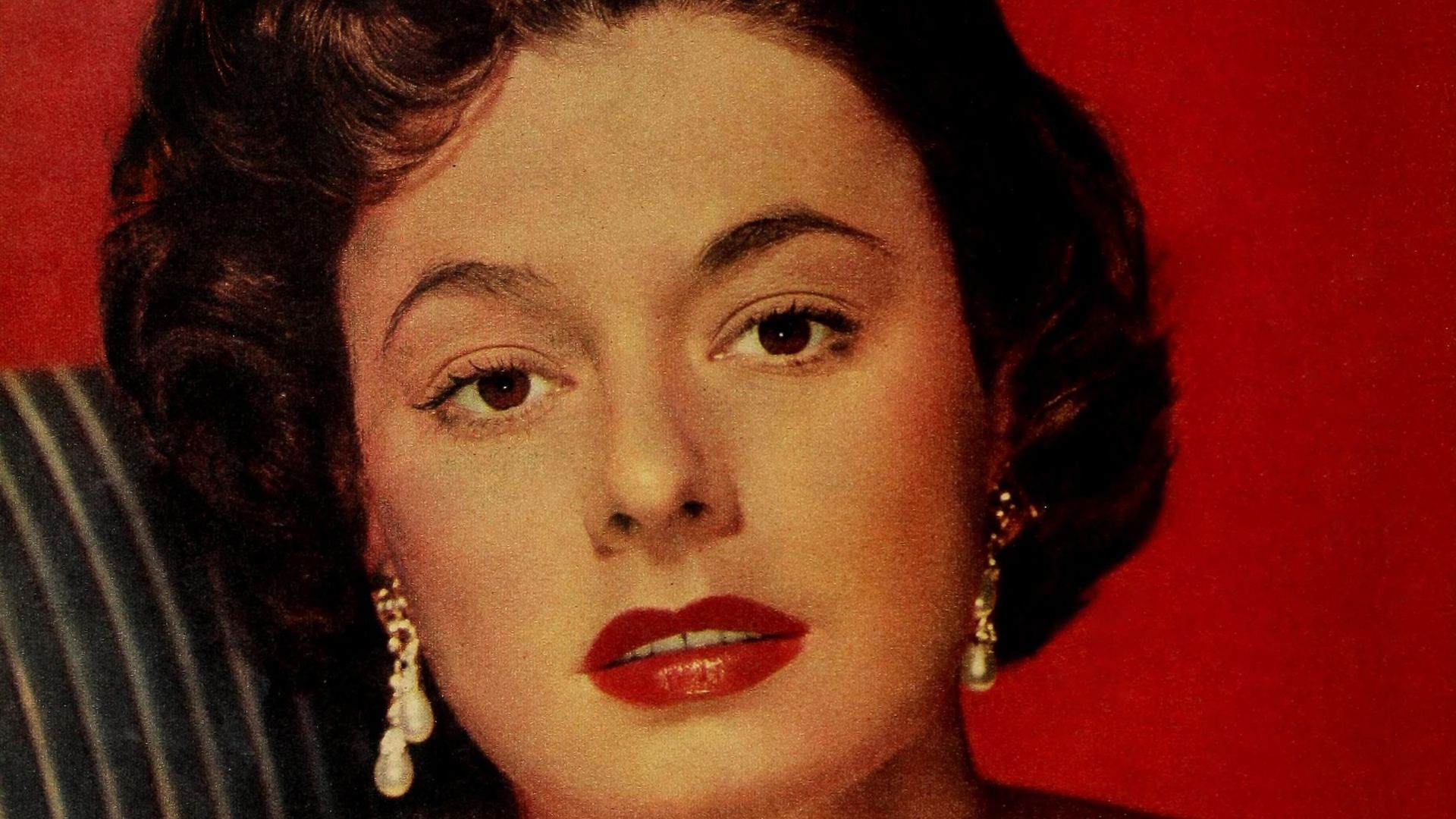 Modern Screen Magazine, Wikimedia Commons
Modern Screen Magazine, Wikimedia Commons
Ruth Roman (Cont.)
By 1951, she received approximately 500 fan letters per week. Look Magazine even crowned Roman as the "Big Time Movie Personality of 1950," capitalizing on her ability to transition between glamorous seductress and wholesome girl-next-door. She showcased amazing on-screen chemistry with leading men like James Stewart.
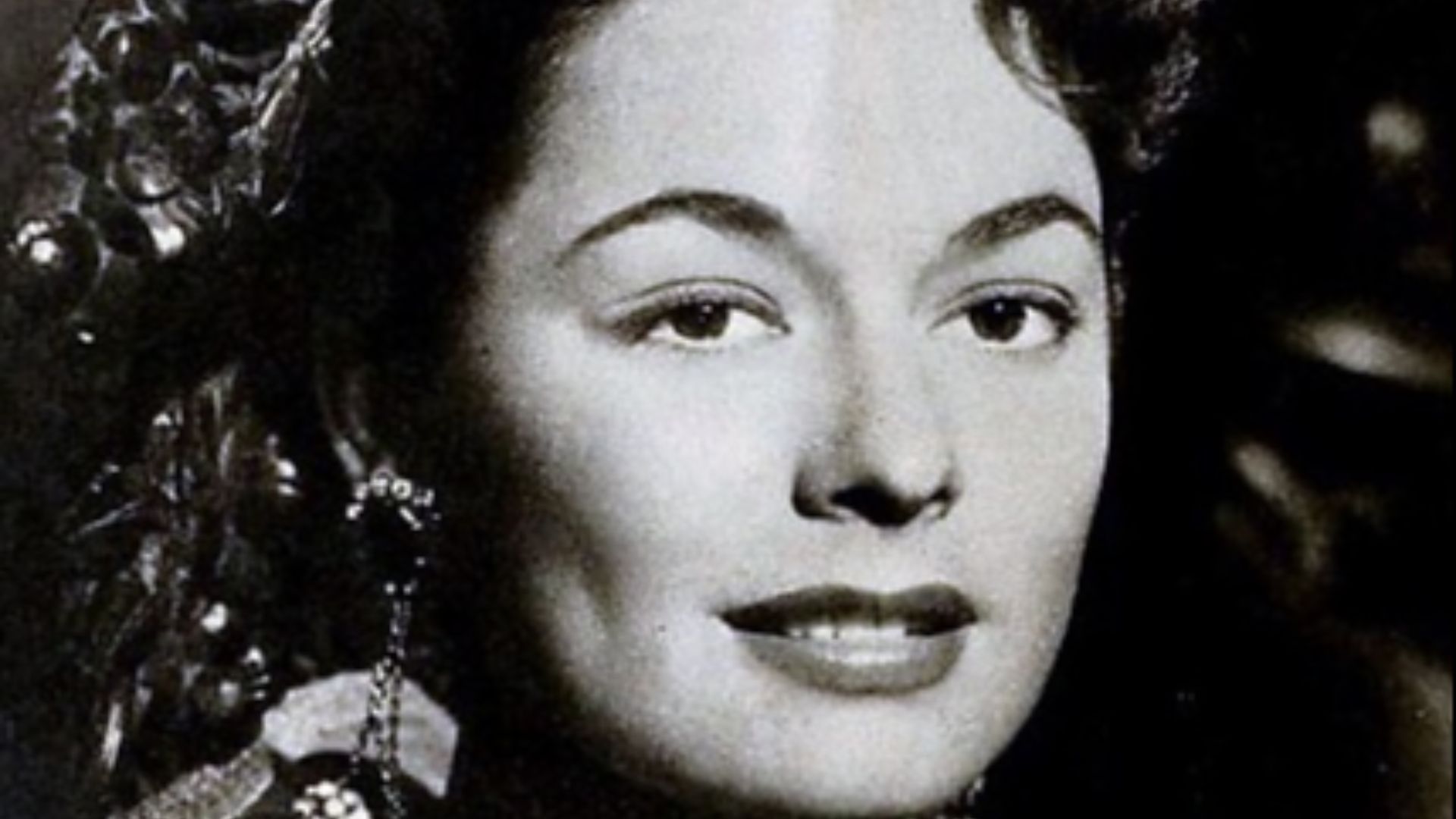 Modern Screen Magazine, Wikimedia Commons
Modern Screen Magazine, Wikimedia Commons
Ingrid Bergman
Bergman's luminous presence in Casablanca created one of cinema's most enduring characters in Ilsa Lund. It was so iconic that years later, the Mission: Impossible franchise would pay homage by naming a character Ilsa Faust. The Swedish actress used to refuse makeup to convey genuine emotion.
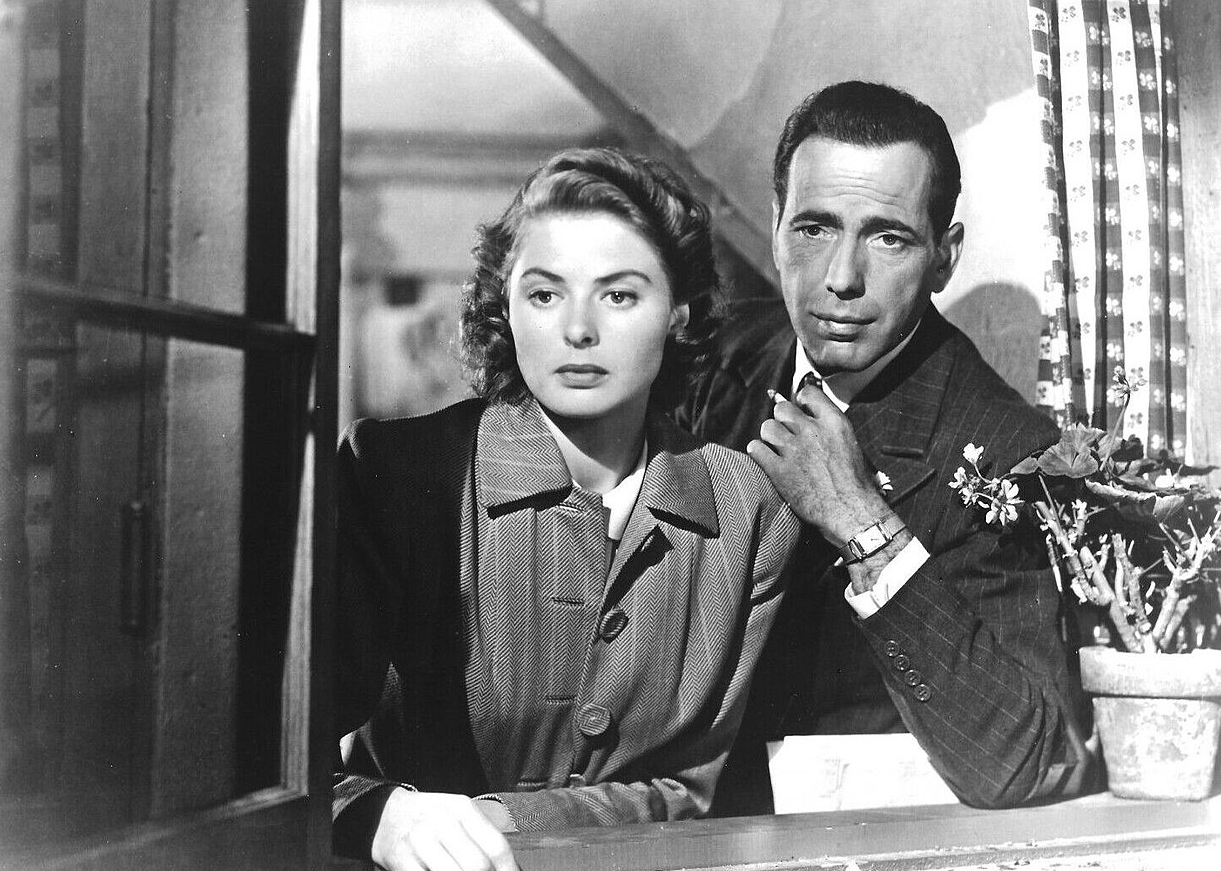 Unknown Author, Wikimedia Commons
Unknown Author, Wikimedia Commons
Ingrid Bergman (Cont.)
Her noteworthy career made her one of the few individuals to achieve the “Triple Crown of Acting” with three Academy Awards, five Golden Globes, and two Emmy Awards. Bergman also courageously used her platform to voice opposition to racial segregation during an unsupportive time.
 Dell Publishing, Wikimedia Commons
Dell Publishing, Wikimedia Commons
Katharine Hepburn
Once labeled "box office poison" after a string of flops, Hepburn strategically bought the rights to The Philadelphia Story, negotiated creative control, and triumphantly returned to Hollywood on her own terms. Well, this was a revolutionary move for a female star in the 1940s.
Katharine Hepburn (Cont.)
Hepburn's transatlantic accent and unconventional beauty established a new template for stardom. Distinguished cultural lists regularly feature her name. These include 100 Icons of the Century, Women Who Changed the World, and 200 Greatest Pop Culture Icons of All Time.
Rita Hayworth
"They go to bed with Gilda and wake up with me," lamented Rita Hayworth about men who couldn't separate her from her most famous character. Born Margarita Carmen Cansino, she underwent painful electrolysis to raise her hairline and dyed her naturally black hair to appear less ethnically Hispanic.
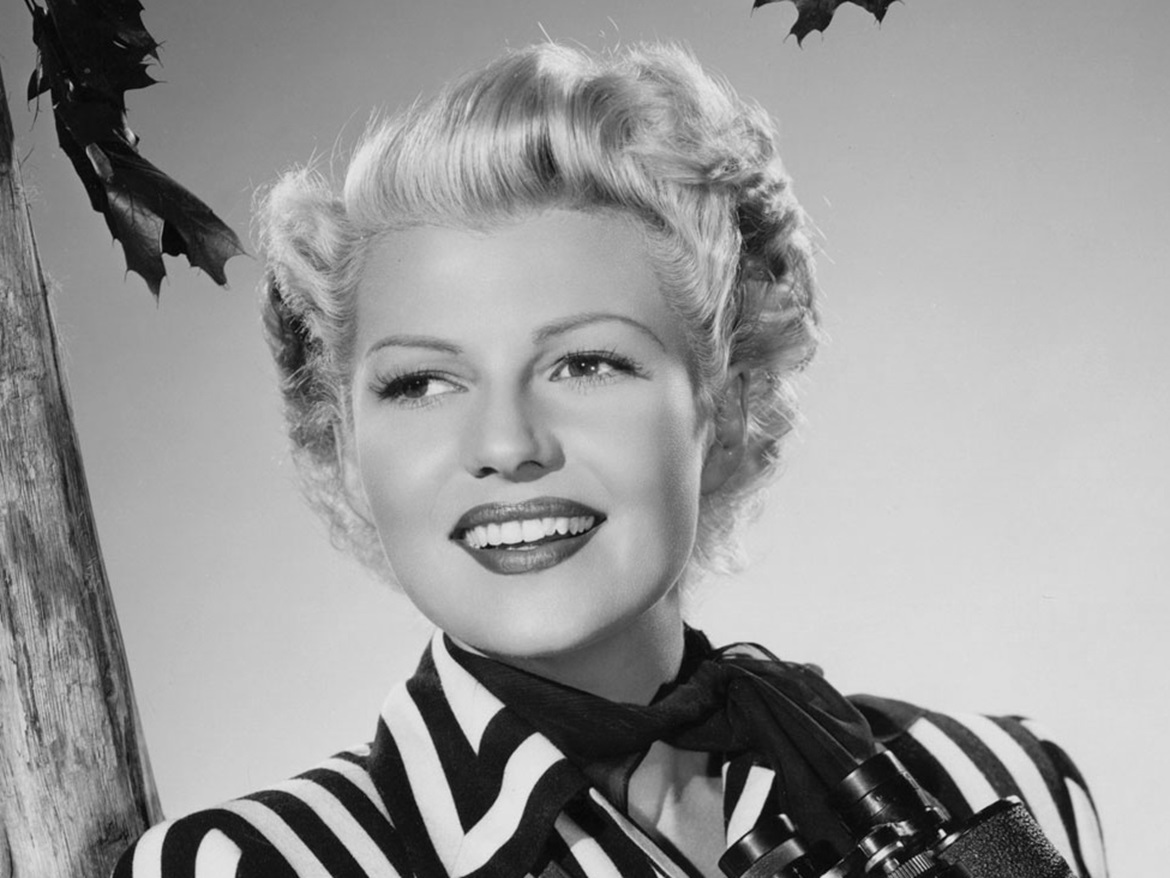 Robert Coburn, Wikimedia Commons
Robert Coburn, Wikimedia Commons
Rita Hayworth (Cont.)
Hayworth's famous pin-up photo of her kneeling on a bed in a negligee became a highly popular pin-up among American troops during WWII. Despite her "Love Goddess" title, Hayworth's personal life featured five failed marriages and a struggle to find an authentic connection.
Anne Baxter
The granddaughter of well-known architect Frank Lloyd Wright charted her artistic path by bagging an Academy Award and a Golden Globe by age 23. She received the same for her portrayal of alcoholic Sophie MacDonald in The Razor's Edge.
 Twentieth Century, The Razor's Edge (1946)
Twentieth Century, The Razor's Edge (1946)
Anne Baxter (Cont.)
Politically active throughout her career, Baxter participated in Republican campaigns while maintaining her busy shooting schedule. After Hollywood's golden era faded, she successfully moved to television. Here as well, she earned an Emmy nomination for her work in the detective series The Name of the Game.
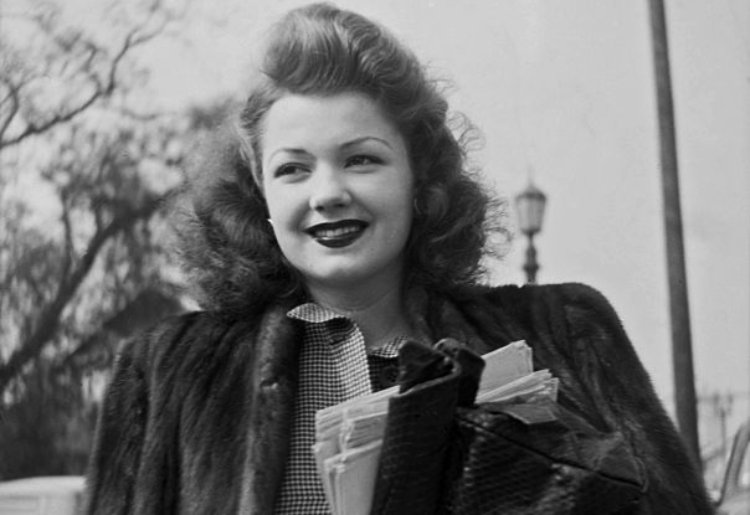 Michael Ochs Archives, Getty Images
Michael Ochs Archives, Getty Images
Gene Tierney
Do you agree Tierney was the most beautiful actress of her generation? Gene Tierney as the main character in Laura brought one of movie noir's most iconic roles. Apparently, the tragic circumstances of her daughter's disabilities inspired Agatha Christie's novel The Mirror Crack'd from Side to Side.
Gene Tierney (Cont.)
Tierney kept her battles with bipolar disorder and electroshock treatments under wraps during her big moments in Hollywood. Still, she delivered a fantastic performance as the obsessive and jealous Ellen in Leave Her to Heaven. Her unique overbite ultimately became a part of her charm.
 Leave Her To Heaven 1945 720p Gene Tierney, Cornel Wilde, Jeanne Crain by Dana Veselov
Leave Her To Heaven 1945 720p Gene Tierney, Cornel Wilde, Jeanne Crain by Dana Veselov
Lauren Bacall
At just 19, the stunning Lauren Bacall made a huge splash with her first film alongside future husband Humphrey Bogart. To Have and Have Not is where she perfected her famous look, characterized by a head tilted down and eyes looking up.
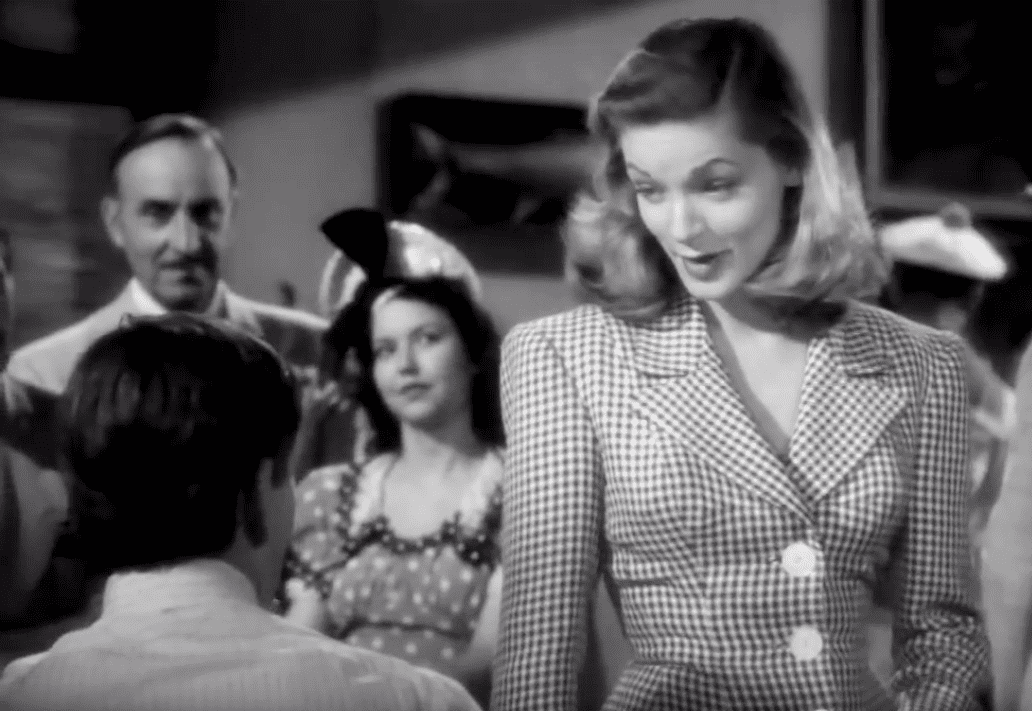 Warner Bros., To have and have not (1944)
Warner Bros., To have and have not (1944)
Lauren Bacall (Cont.)
Director Howard Hawks even helped her adjust her voice to achieve that deep, husky sound that became one of the most recognizable female voices. A key moment in her career came when she was perched on President Harry Truman's piano during a National Press Club event.
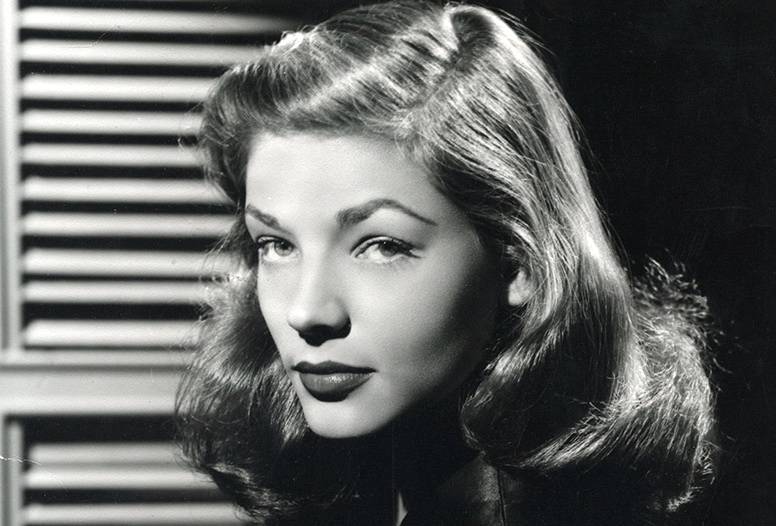 Unknown Author, Wikimedia Commons
Unknown Author, Wikimedia Commons
Veronica Lake
Lake's signature "peek-a-boo" hairstyle, with her long blonde hair swooping over one eye, became a huge hit. To such an extent that women in WWII factories began copying it, resulting in some job-related accidents. Because of this, the US government asked Lake to switch up her hairstyle.
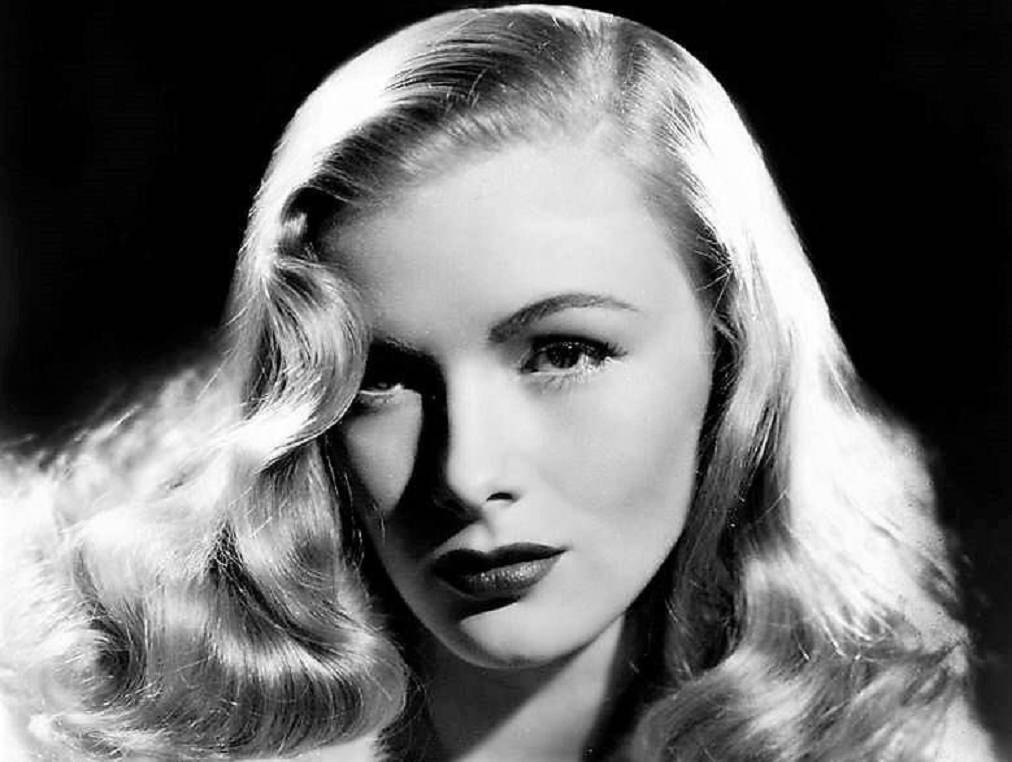 Paramount Pictures, Wikimedia Commons
Paramount Pictures, Wikimedia Commons
Veronica Lake (Cont.)
She had a strong start in This Gun for Hire, but things took a downturn pretty quickly because of her reputation for being hard to work with and her struggles with alcoholism. Sadly, this all played a part in her passing from hepatitis at the age of 50.
Betty Grable
In case you didn't know, those famous legs were insured by Twentieth Century Fox for $1 million with Lloyd's of London. This made Betty Grable's limbs the most valuable in Hollywood. That’s not all. In the 1940s, she was also the highest-paid female entertainer in America.
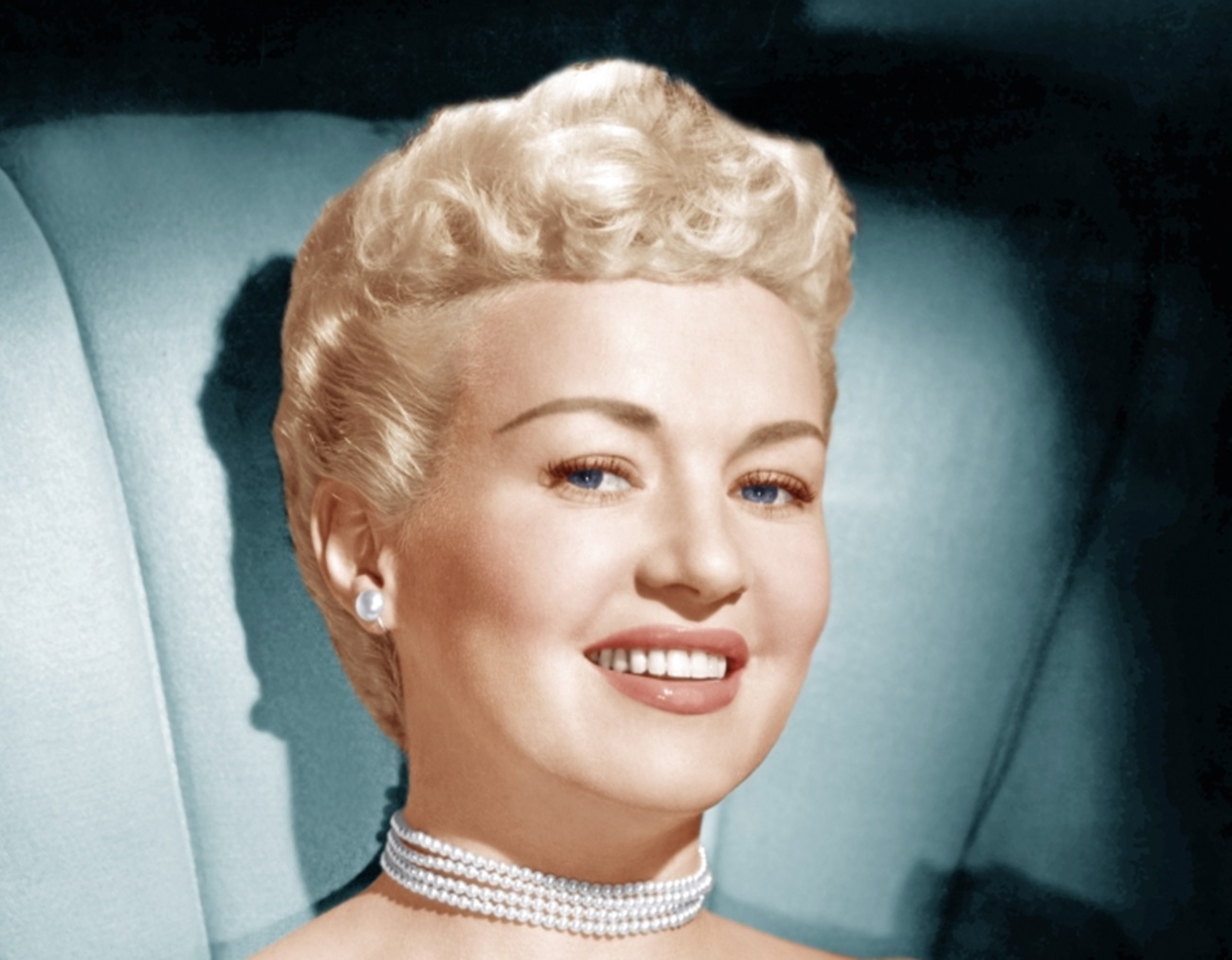 Studio Publicity, Wikimedia Commons
Studio Publicity, Wikimedia Commons
Betty Grable (Cont.)
Grable literally earned over $300,000 annually and remained a top box office draw for about a decade. She once joked, “I'm a song and dance girl. I can act just enough to get by. But that's about it for my talents”.
Judy Garland
Beneath the rainbow of The Wizard of Oz lurked the dark reality of studio exploitation. MGM executives kept the teenage Garland on a regimen of amphetamines for energy and barbiturates for sleep, fueling a lifelong addiction. Studio head Louis B Mayer also cruelly nicknamed her his “little hunchback”.
Judy Garland (Cont.)
Even though she faced such tough times, Judy Garland shone in Meet Me in St. Louis and Easter Parade in the 40s. During this time, she was also recognized with a special Academy Juvenile Award for her outstanding performance as a screen juvenile.
Donna Reed
Born Donna Belle Mullenger on an Iowa farm, Reed carried her Midwestern work ethic with her throughout her journey in Hollywood. During World War II, Reed became one of the most dedicated correspondents to American soldiers. She would personally answer thousands of letters from servicemen.
Donna Reed (Cont.)
Reed’s acting as Mary Hatch Bailey, opposite James Stewart, is considered beloved and enduring. She is best remembered for her wholesome, engaging "girl next door" persona, which she brought to numerous classic roles in the 1940s and 1950s.
Vivien Leigh
Winning two Academy Awards after appearing in only 19 films, Leigh achieved a success-to-screen-time ratio unmatched in Hollywood history. Her grueling 16-hour days during the filming of Gone with the Wind required constant costume changes weighing up to 30 pounds in the Atlanta summer heat.
Vivien Leigh (Cont.)
Apparently, the heroine brought a cosmopolitan sophistication to Southern belle Scarlett O'Hara that initially concerned producers. Her tumultuous marriage to Laurence Olivier, considered the theatrical romance of the century, masked private struggles with mental illness that often manifested on set.
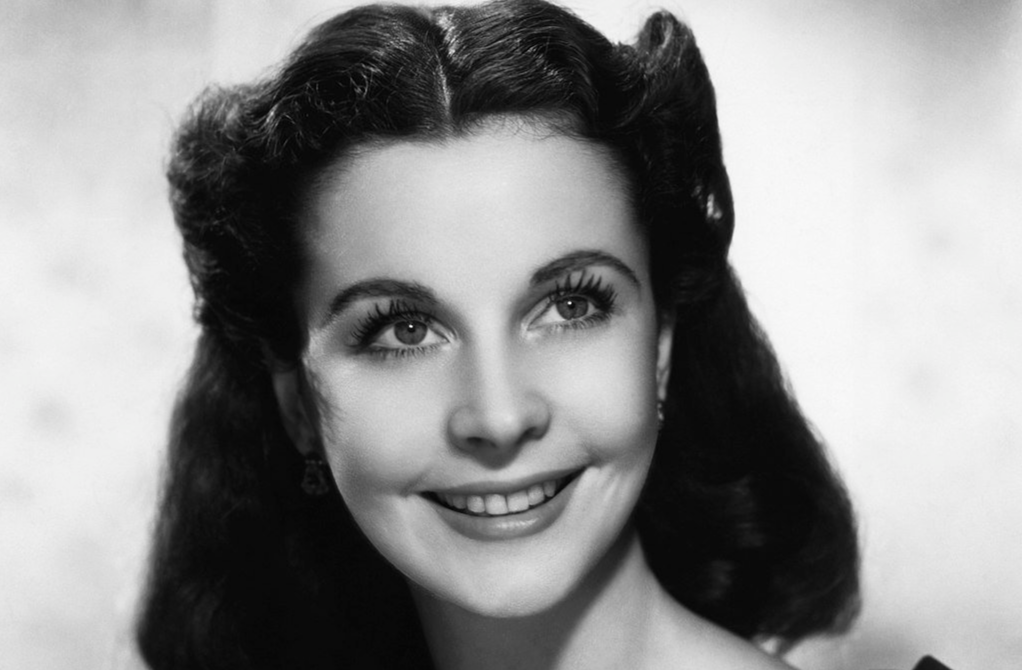 Fawcett Publications, Wikimedia Commons
Fawcett Publications, Wikimedia Commons
Maureen O'Hara
Maureen O'Hara, referred to as "The Queen of Technicolor," was recognized for her red hair, striking green eyes, and flawless complexion. O'Hara's athleticism set her apart from contemporaries—she performed her own stunts and brought authentic swashbuckling skills to adventure movies like The Black Swan.
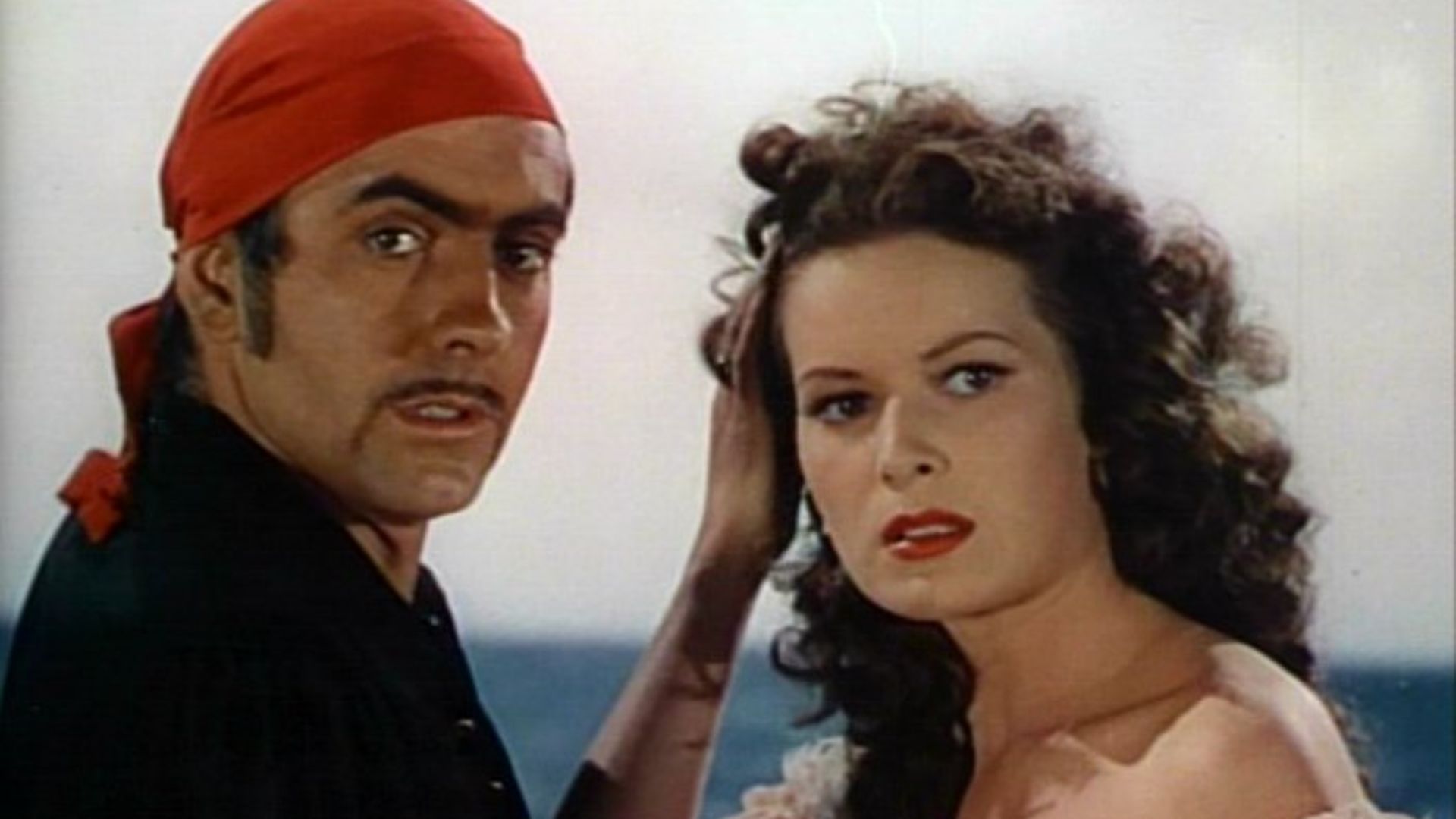 Trailer screenshot, Wikimedia Commons
Trailer screenshot, Wikimedia Commons
Maureen O'Hara (Cont.)
Besides, she also became one of the first women to captain a commercial passenger schooner in the Caribbean after earning her pilot's license. In 2022, The Irish Times rightly ranked O'Hara first on their list of Ireland's greatest film actors.
Agnes Moorehead
Though modern audiences remember her as Endora from Bewitched, Moorehead first established herself as one of Welles' Mercury Theatre Players, appearing in Citizen Kane. Her unforgettable entrance in The Magnificent Ambersons required her to deliver a 10-minute unbroken monologue while ascending a staircase.
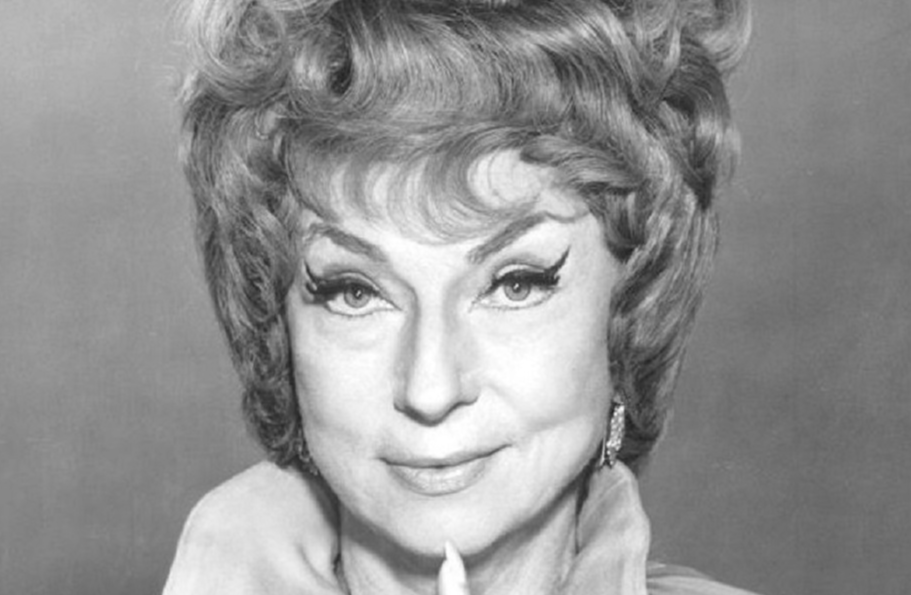 ABC Television, Wikimedia Commons
ABC Television, Wikimedia Commons
Agnes Moorehead (Cont.)
Moorehead broke barriers as the first woman to host the Academy Awards ceremony in 1948. She received four Oscar nominations and six Emmy nominations, but never won Hollywood's top prize—a fact that bothered her colleagues. Moorehead maintained her teaching credentials throughout her acting career.
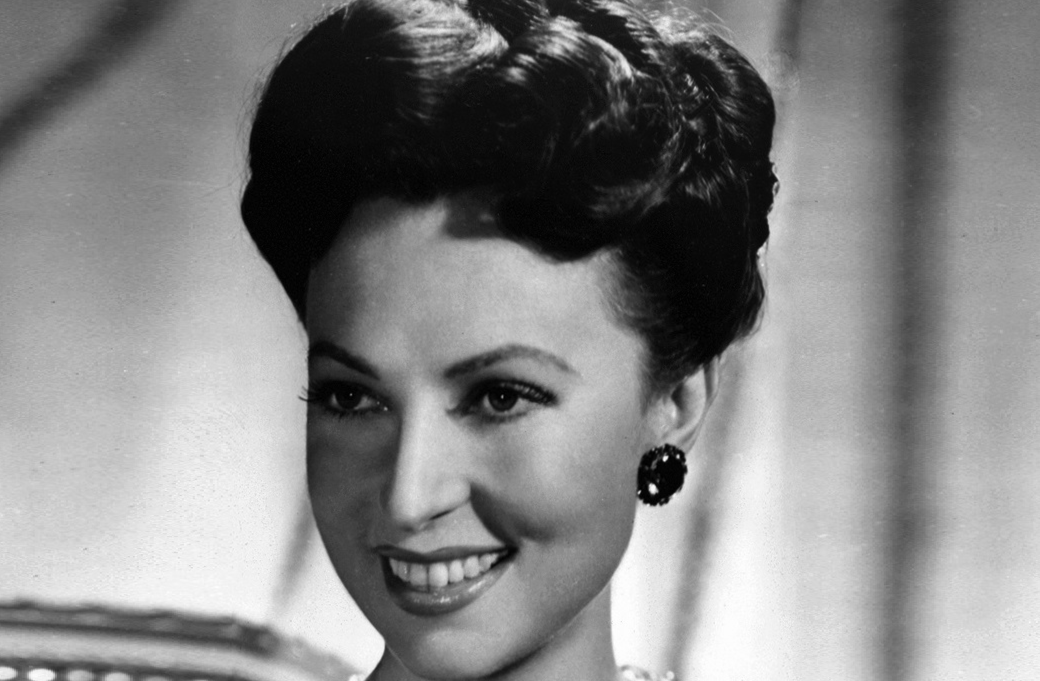 RKO Pictures, Wikimedia Commons
RKO Pictures, Wikimedia Commons
Greer Garson
With her record-setting five consecutive Academy Award nominations for Best Actress from 1941 to 1945, the actress dominated the wartime box office like no other. Her acceptance speech for Mrs. Miniver ran five and a half minutes. This prompted the Academy to implement time limits.
Greer Garson (Cont.)
However, Garson's path to stardom came unusually late. She was 33 when Louis Mayer discovered her on a London stage. Her first major movie, Goodbye, Mr. Chips (1939), set her on the path to becoming one of the leading stars of the 1940s.
Jean Simmons
At the age of 21, Simmons had already received an Oscar nomination for playing Ophelia opposite Laurence Olivier's Hamlet. Hughes's obsessive interest in her led to his purchase of her contract, after which he deliberately stalled her career when she rejected his romantic advances.
Jean Simmons (Cont.)
Trained at the Royal Academy of Dramatic Art, Simmons transitioned between British prestige films and Hollywood blockbusters. Her work in Guys and Dolls revealed an unexpected talent for musical comedy, holding her own against Frank Sinatra. Note that she had no formal singing training.
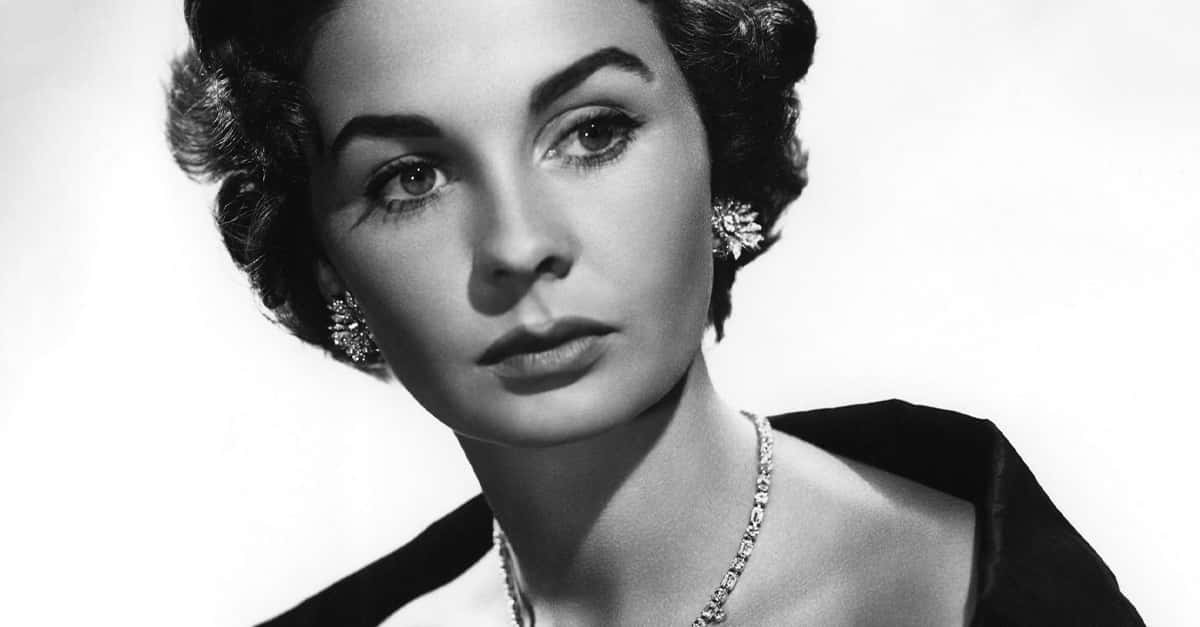 Broadway Rhythm Ballet - Gene Kelly & Cyd Charisse - Singin' in the Rain (1952) by DragonBossJPX
Broadway Rhythm Ballet - Gene Kelly & Cyd Charisse - Singin' in the Rain (1952) by DragonBossJPX
Cyd Charisse
This star’s Broadway Melody fantasy sequence with Gene Kelly in Singin' in the Rain is considered one of the most electrifying dance performances in history. Charisse began acting in the early 1940s, initially appearing in small roles and dance sequences, including Something to Shout About (1943).
 Broadway Rhythm Ballet - Gene Kelly & Cyd Charisse - Singin' in the Rain (1952) by DragonBossJPX
Broadway Rhythm Ballet - Gene Kelly & Cyd Charisse - Singin' in the Rain (1952) by DragonBossJPX
Cyd Charisse (Cont.)
MGM brought her on board in 1946, and before long, she was making a name for herself in big musical movies. Charisse usually shared the spotlight with dancers Fred Astaire and Gene Kelly. Her first speaking role was in The Harvey Girls (1946), supporting Garland.
 Wait And See (from "The Harvey Girls") by Jymster46
Wait And See (from "The Harvey Girls") by Jymster46
Teresa Wright
Here comes the only actress in Hollywood history to get Academy Award nominations for her first three films. Wright’s insistence on serious roles and refusal to comply with typical Hollywood glamour expectations led Samuel Goldwyn to eventually terminate her contract for “underestimating her public attraction”.
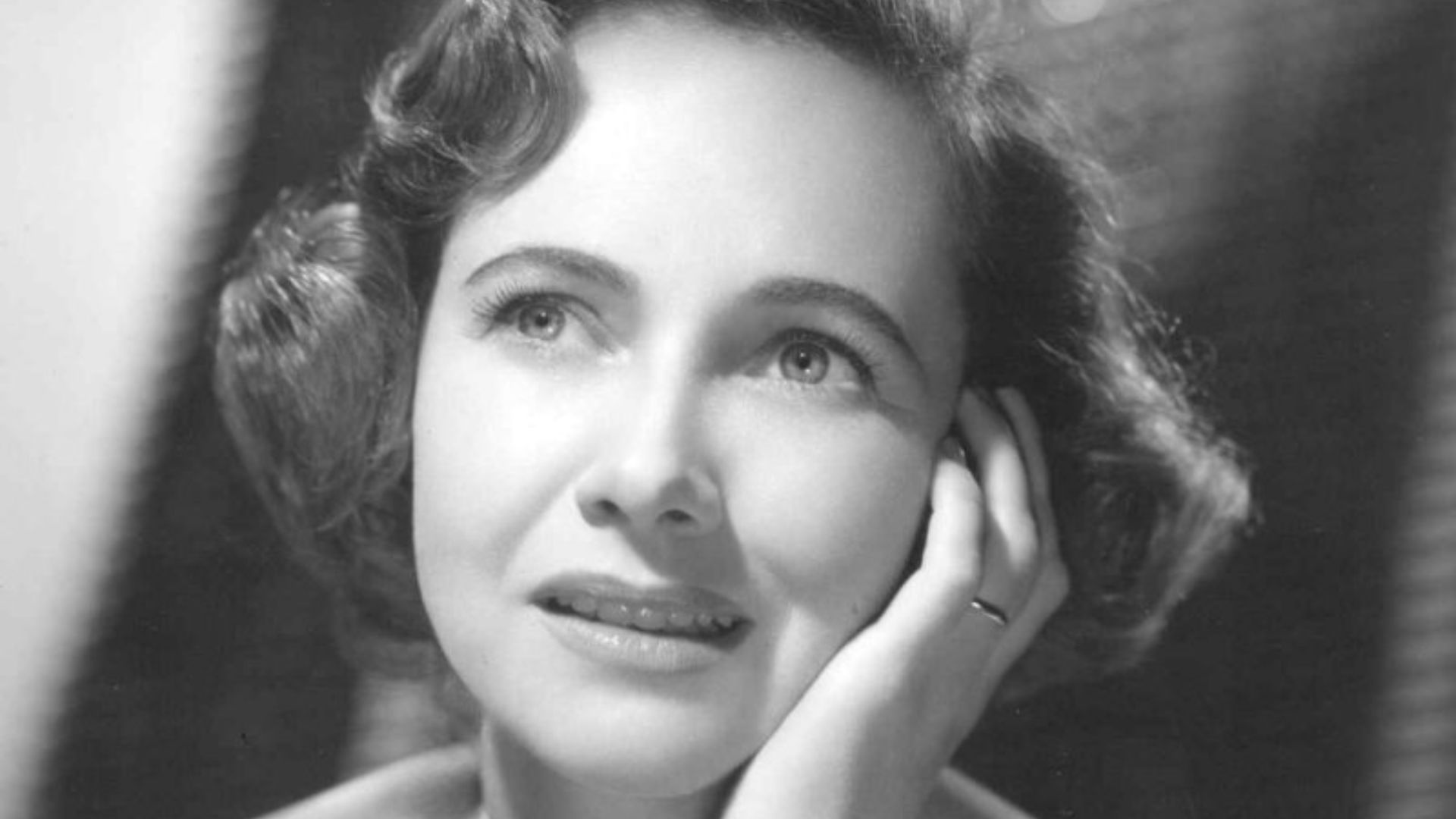 Unknown authorUnknown author, Wikimedia Commons
Unknown authorUnknown author, Wikimedia Commons
Teresa Wright (Cont.)
Well, her naturalistic acting style made her Alfred Hitchcock's favorite actress to work with. He praised her for arriving on set with lines memorized and no fussy requests. Wright’s Oscar-winning performance as the young wife in Mrs. Miniver resonated particularly with wartime audiences facing similar anxieties.
 Unknown authorUnknown author, Wikimedia Commons
Unknown authorUnknown author, Wikimedia Commons
Myrna Loy
During the 1940s, Loy kept impressing everyone with her acting in movies like I Love You Again (1940), Love Crazy (1941), and especially The Best Years of Our Lives (1946), which bagged the Oscar for Best Picture. After taking a brief break during WWII, she made a comeback.
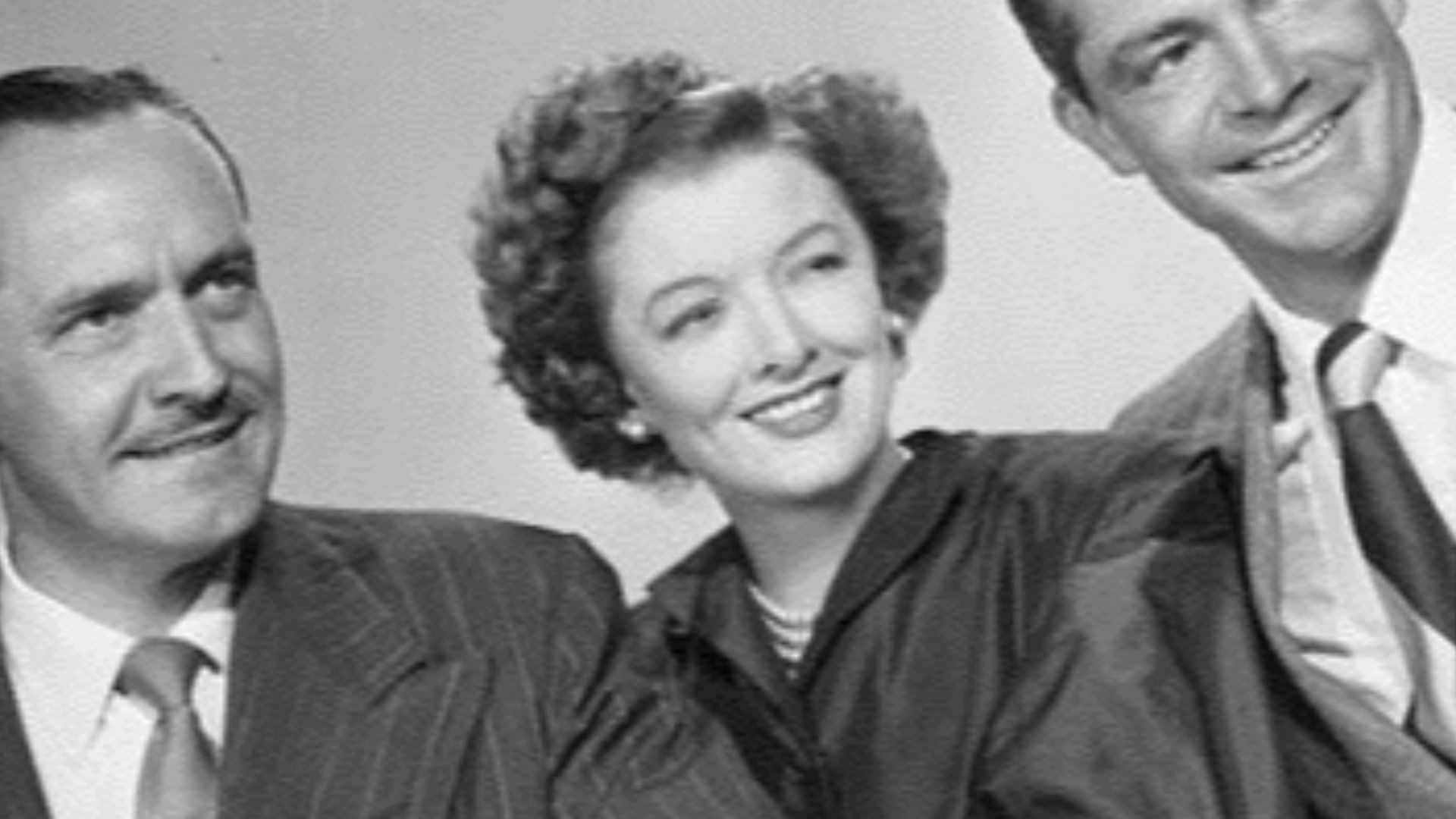 Samuel Goldwyn Company, Wikimedia Commons
Samuel Goldwyn Company, Wikimedia Commons
Myrna Loy (Cont.)
Loy even starred alongside Cary Grant in The Bachelor and the Bobby-Soxer (1947) and Mr. Blandings Builds His Dream House (1948). Her screen persona was admired for combining beauty, intelligence, and a sense of equality in male-dominated roles, often portraying women who were charming and wise.


